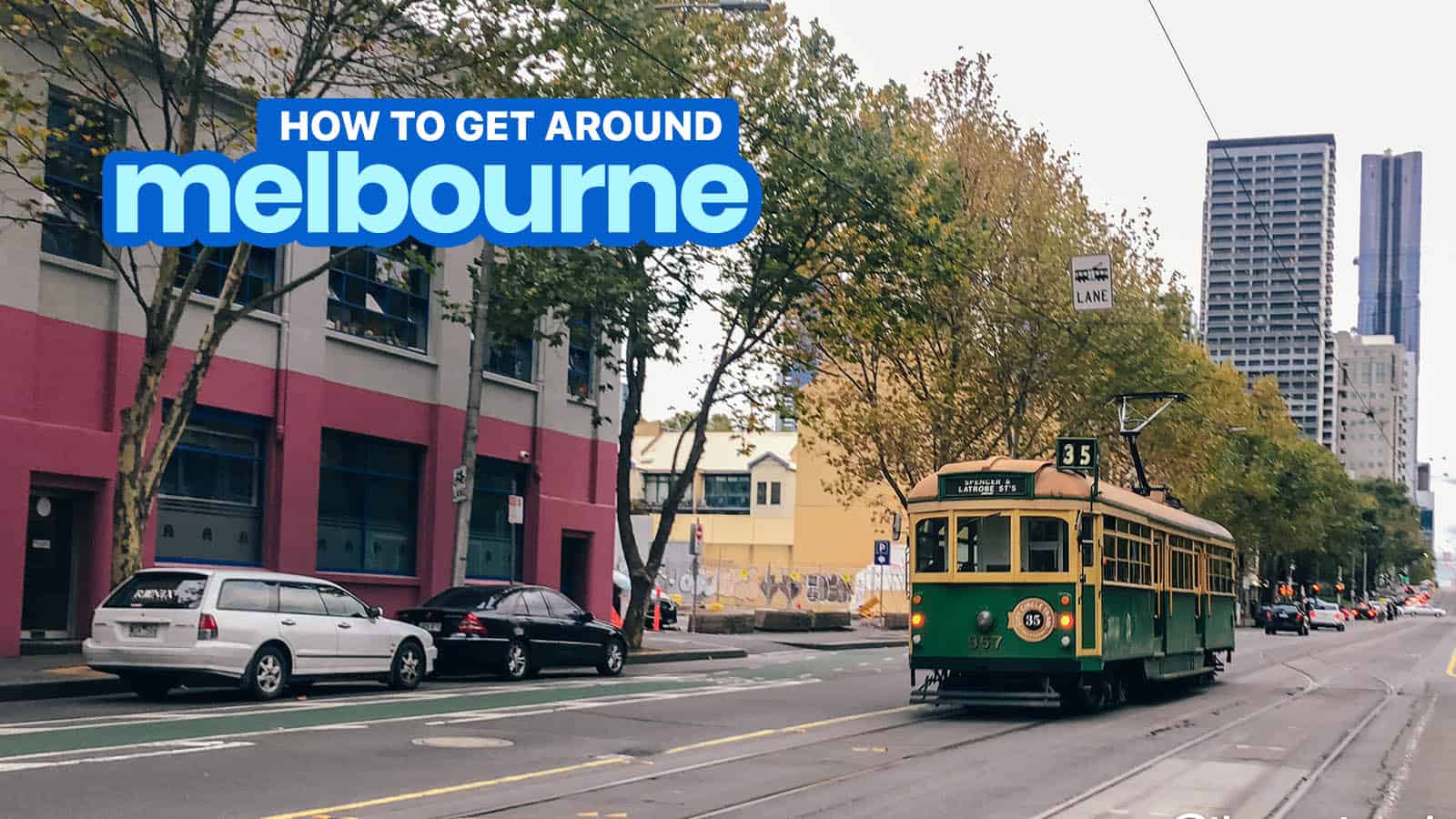

GETTING AROUND MELBOURNE: How to Use Myki Card + Tram, Train, Bus

Melbourne is widely regarded as the city with the best transportation system in Australia. With its impressive and expansive network of tram, train, and bus lines, Melbourne should be quite easy to explore. And it was. I found myself enjoying the journey from one attraction to another. However, it wasn’t always like that.
On my first couple of days in Melbourne, I was extremely overwhelmed by its public transportation services. The route network itself is easy to digest. It was the pricing and the whole myki system that I found too confusing. Thankfully, it was only in the beginning. Once I got the hang of it, everything went smoothly.
In this post, I’ll try to explain how the myki card works and how to use Melbourne’s public transportation as simply as I can.
WHAT'S COVERED IN THIS GUIDE?
Melbourne’s Transport Zones
First, it’ll be helpful to understand Melbourne’s transport zones. The metropolitan area of Melbourne is divided into three zones:
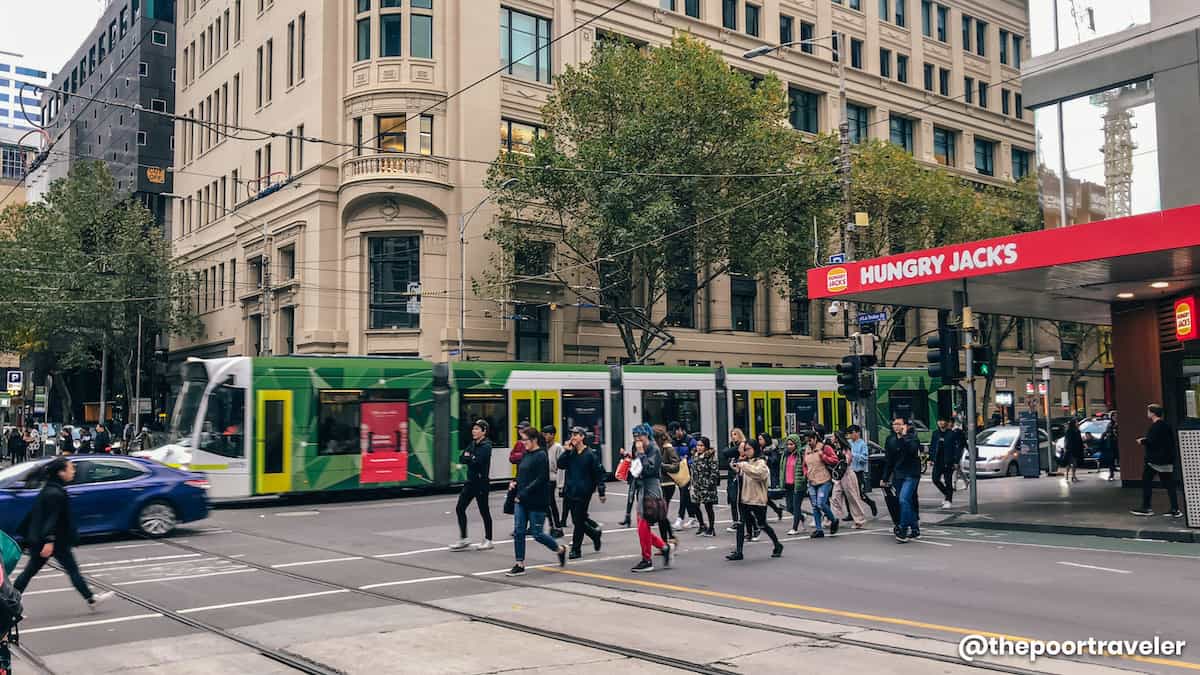
- Free Tram Zone spans much of the Melbourne CBD. When traveling by TRAM within the zone, you don’t need to pay for anything. For tourists, this is very useful because several tourist attractions are located within this zone. The Free Tram Zone is part of Zone 1. I’ll discuss it further in the next section.
- Zone 1 covers the city center and some suburbs in the outskirts of the city.
- Zone 2 covers the suburbs farther away from the city center including Werribee and Frankston.
The rail map below illustrates this better. Stations along yellow lines are within Zone 1, while those in blue are within Zone 2.
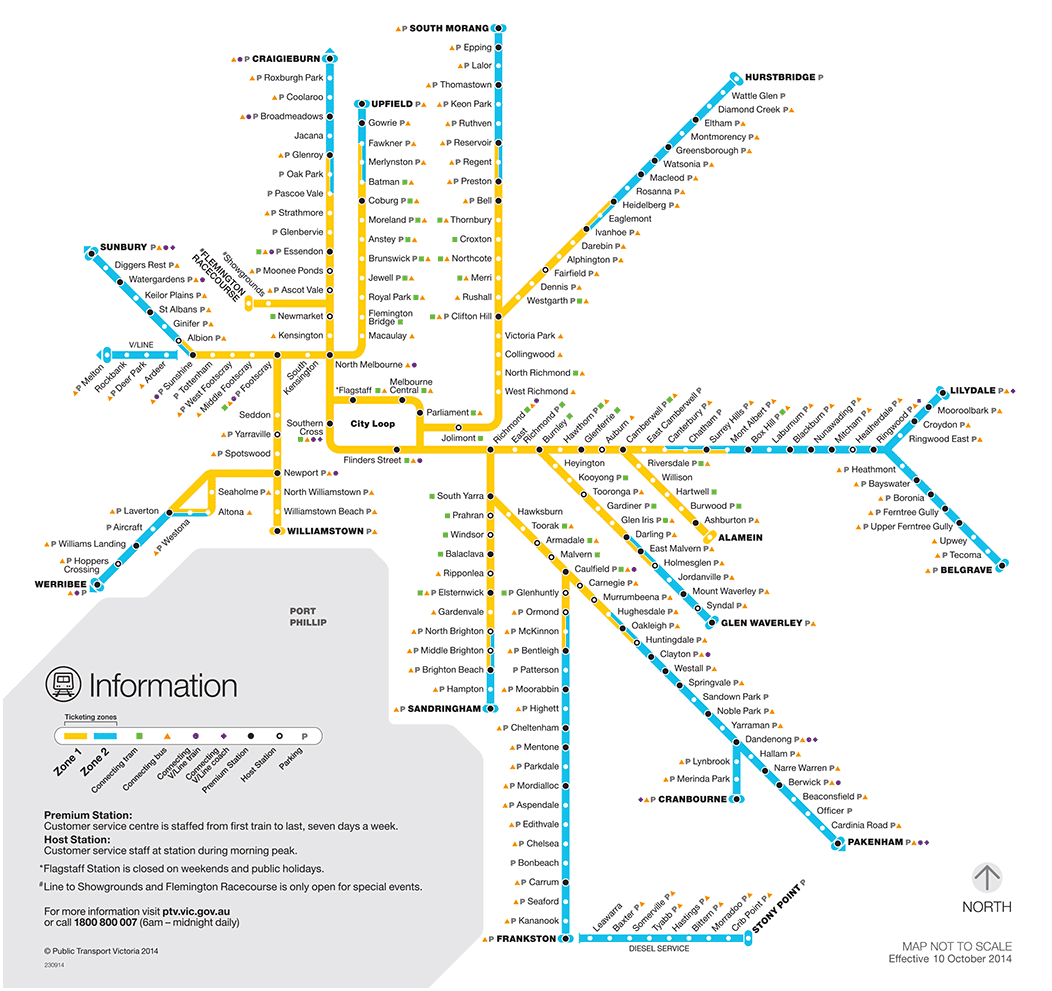
These zones dictate the fare. A different fare applies when you’re traveling within Zone 1 and traveling within Zone 2. But when you’re traveling BETWEEN Zones 1 and 2, the fare is the same as traveling within Zone 1. Here’s a quick summary of these fares.
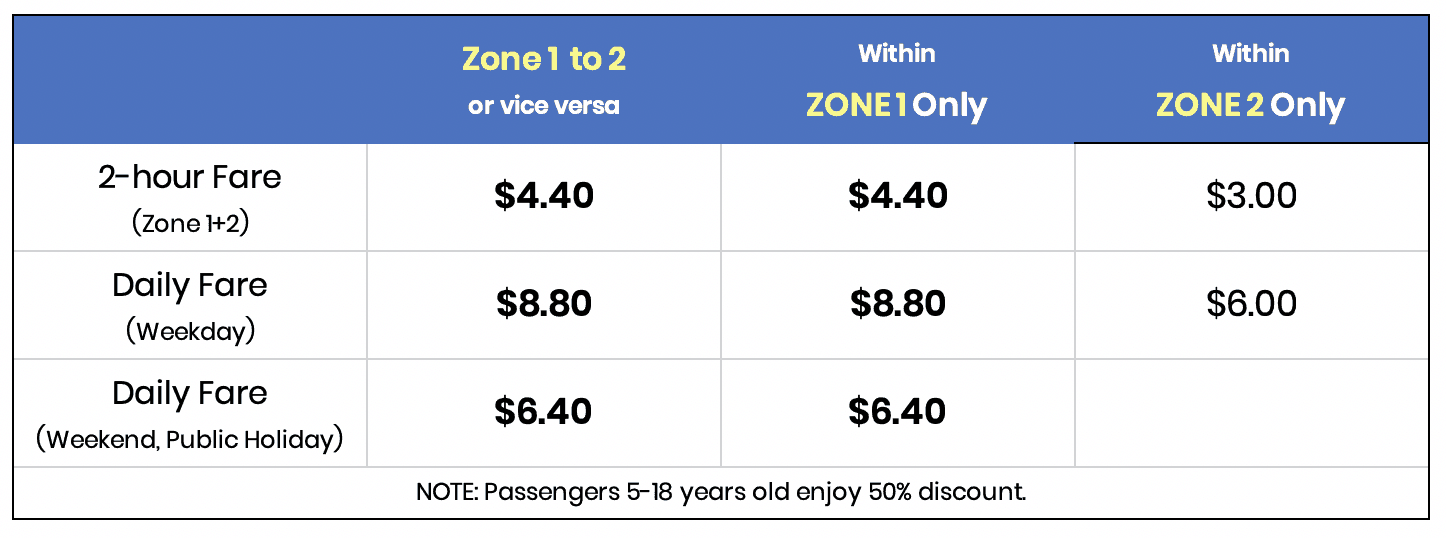
I’ll explain these fares further below.
But if you’re traveling within the FREE Tram Zone, you don’t need to pay anything because it’s, well, free.
FREE Tram Zone
For visitors, one of the best things about Melbourne is its iconic FREE TRAM . You don’t need to get any sort of pass or ticket to avail of this; just hop into the tram. It’s FREE as long as you’re traveling WITHIN the FREE TRAM ZONE.
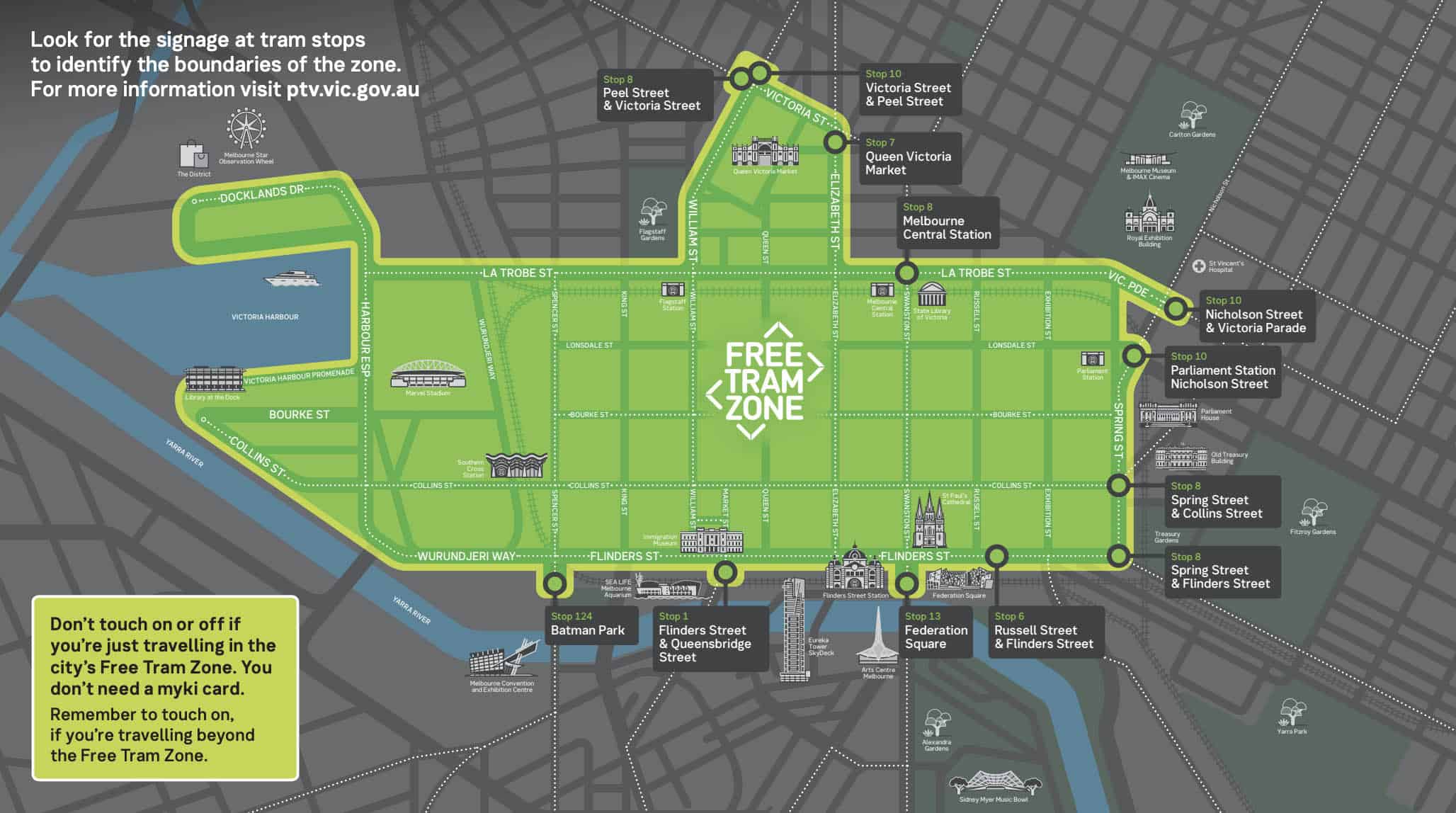
If your starting or ending point is outside the zone, the A$4.40 rate will apply.
Outside the free tram zone, you have plenty of options. But wait, before that, let me introduce to you the myki .
How Does the myki Card Work?
The myki is an electronic stored-value reloadable smart card that is used in all public transportation services in Melbourne — bus, tram, train. With this card, you can easily get around the city and even the surrounding suburbs. Cash isn’t accepted anymore. Even if you’re a tourist staying in Melbourne for a few days, you will need to get a myki card if you want to use the public transportation system. And that’s a problem because the myki system is just so confusing especially for tourists.
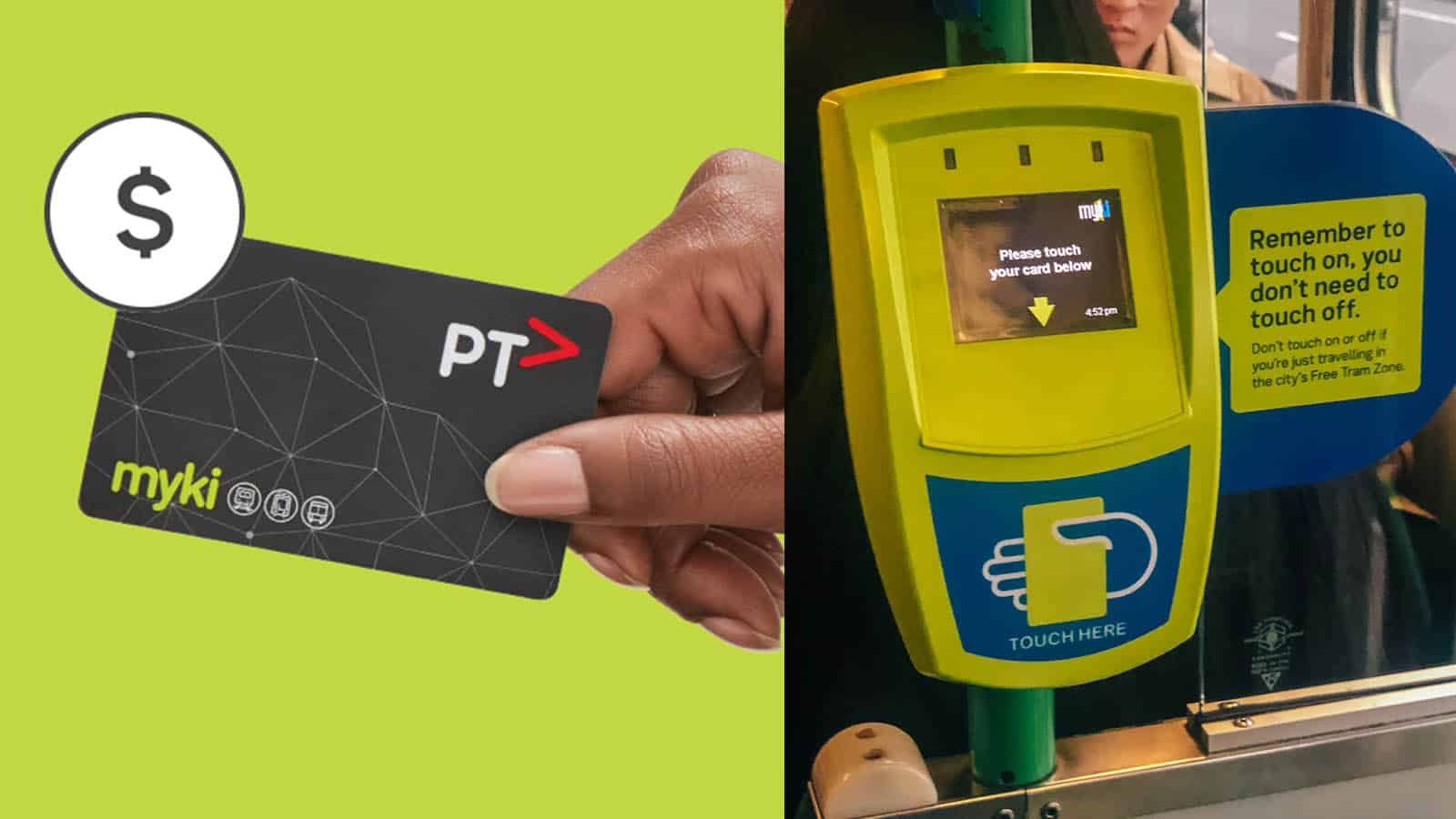
So how does it work? Well, it works just like Hong Kong’s Octopus card or Tokyo’s SUICA/PASMO card. You “touch on” the card — hover the card above the reader — before entering the train station or boarding the bus/tram and “touch off” when you reach your destination. But it’s a lot more complicated.
Here are some important points.
- The card costs AUD 6. That’s just for the card itself. You will need to top it up after.
- The standard fare is AUD 4.40, which is good for 2 hours — that is 2 hours from the moment you first use or touch on the card. However, if you touch on after 6pm, the 2-hour fare is valid until 3am the next day.
- The daily fare is AUD 8.80. This is the maximum you can spend per day as long as you’re traveling within Melbourne City (Zone 1) and suburbs (Zone 2). Meaning, if you use the card once, you’re gonna get charged A$4.40 for the first 2 hours. If you use it again after 2 hours, you’ll be charged A$8.80, valid for another 2 hours. But if after 2 hours, you decide to use it again, you will no longer be charged because the A$8.80 daily cap is already reached. Same with succeeding uses on that day. It sort of automatically becomes an unlimited pass.
- On weekends, the daily cap is only AUD 6.40. Same reduced rate applies to public holidays.
- A 7-Day myki Pass is available for only AUD 44. This is a good deal if you’re exploring Melbourne for 7 days. Note that these are consecutive days.
- Passengers 5-18 years old can avail of the 50% concession discount. The card price becomes only A$3, weekday fare A$2.20 for 2 hours, daily rate A$4.40, weekend daily cap A$3.2, and 7-day pass cost A$22. Passengers younger than 5yo can travel for FREE.
- You don’t need a myki when traveling by tram within the FREE Tram Zone. If you have a myki, you DO NOT need to touch on your card if within the Free Tram Zone. But if your starting or ending point is outside the zone, the A$4.40 2-hour rate will apply.
Here’s a quick summary of the fares (as of 2019).
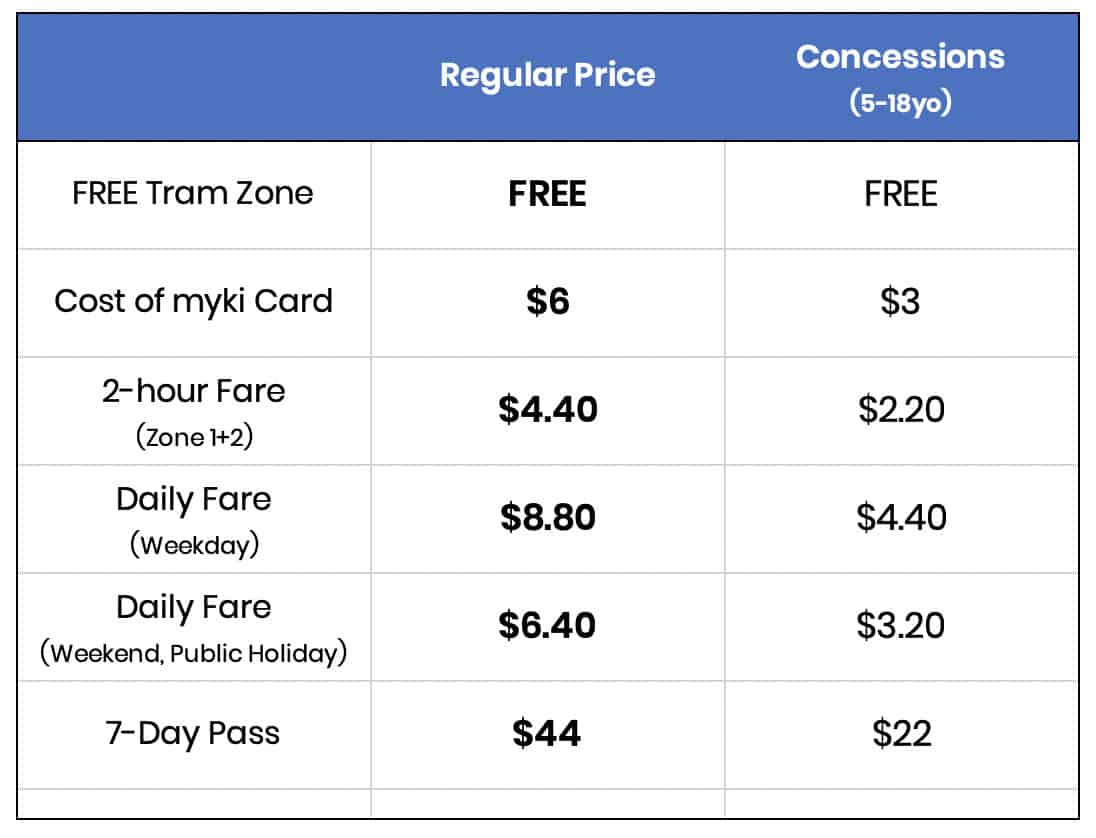
A lower fare applies if you’re traveling within Zone 2 (farther suburbs), but as a tourist, you’re probably gonna be coming from Zone 1 so I decided not to break it down in the table above to avoid making this a lot more complicated.
How to Use Melbourne’s Trams, Trains & Buses
Having a lot of available transportation modes is both great and confusing. How do you know which is the best option for your desired destination?
If you own a smartphone, you can download the PTV app. PTV stands for Public Transport Victoria, the agency that governs and runs the tram, train, and bus systems in this part of Australia. You can download here: iOS , Android .
On the app, enter your origin and destination. If you’ve allowed the app to use your location, it can show you the station nearest you. It will then present a selection of routes that you may take. Pick one based on your schedule and preferences.
Then follow these:
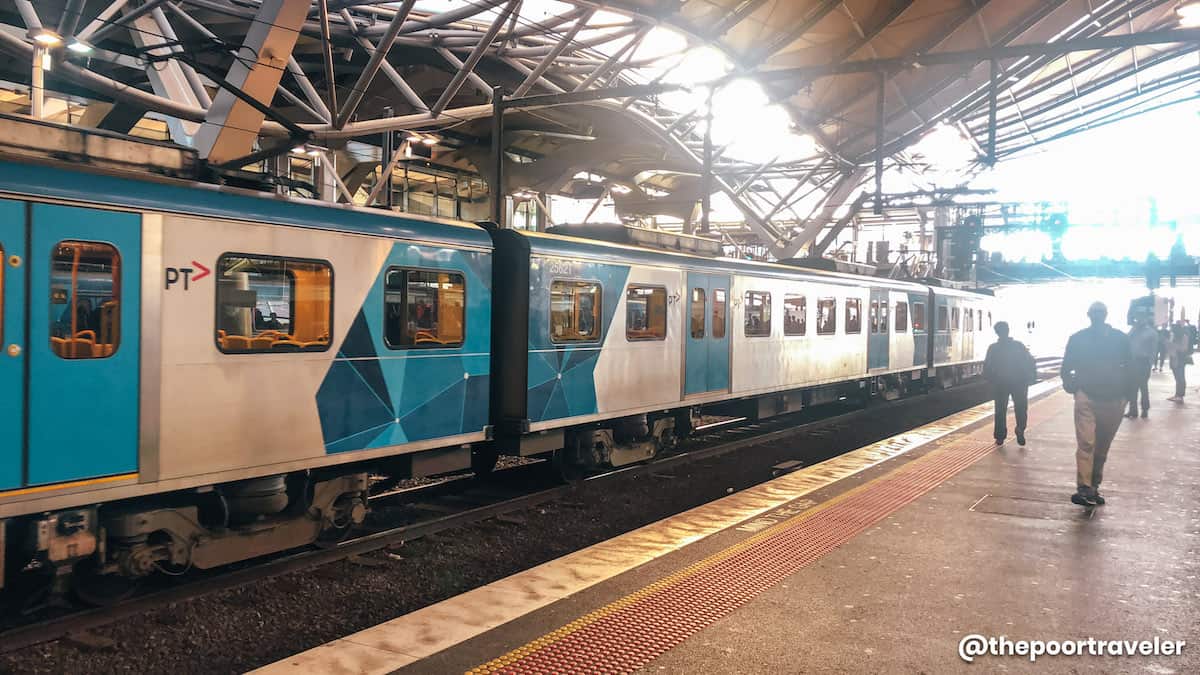
- Touch on your myki card as you enter the station. You will find myki card readers at the entrance gates.
- Head to the designated platform. You’ll see the platform number on the PTV app. Also look for signs to double check. You’ll find the train timetable at the platform. Check out the signs on the train or at the platform to make sure you’re boarding the right train.
- If you’re making a transfer, no need to touch off the card UNLESS there are barrier gates in between.
- Touch off your myki card as you exit the station.
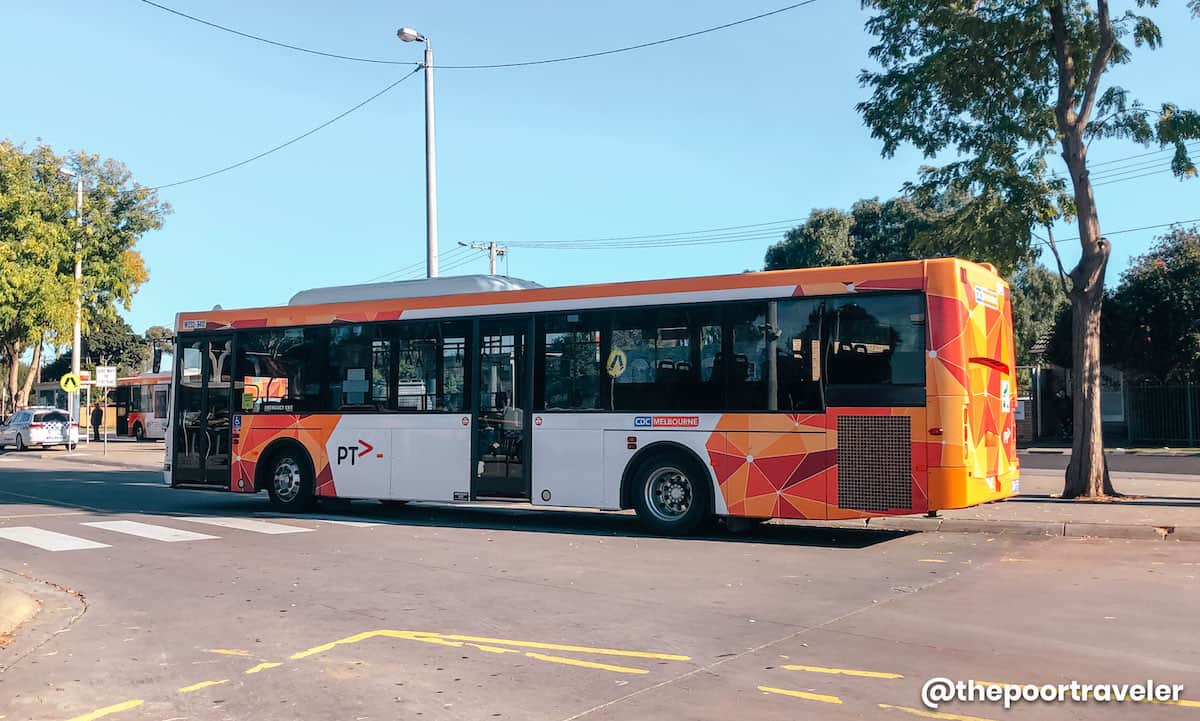
- Make your way to the bus stop. There usually is a timetable displayed at each stop.
- When your bus arrives, hop in.
- Touch on your card as you enter. You’ll find the myki readers onboard the vehicle.
- When you reach your destination, don’t forget to TOUCH OFF before alighting the bus.
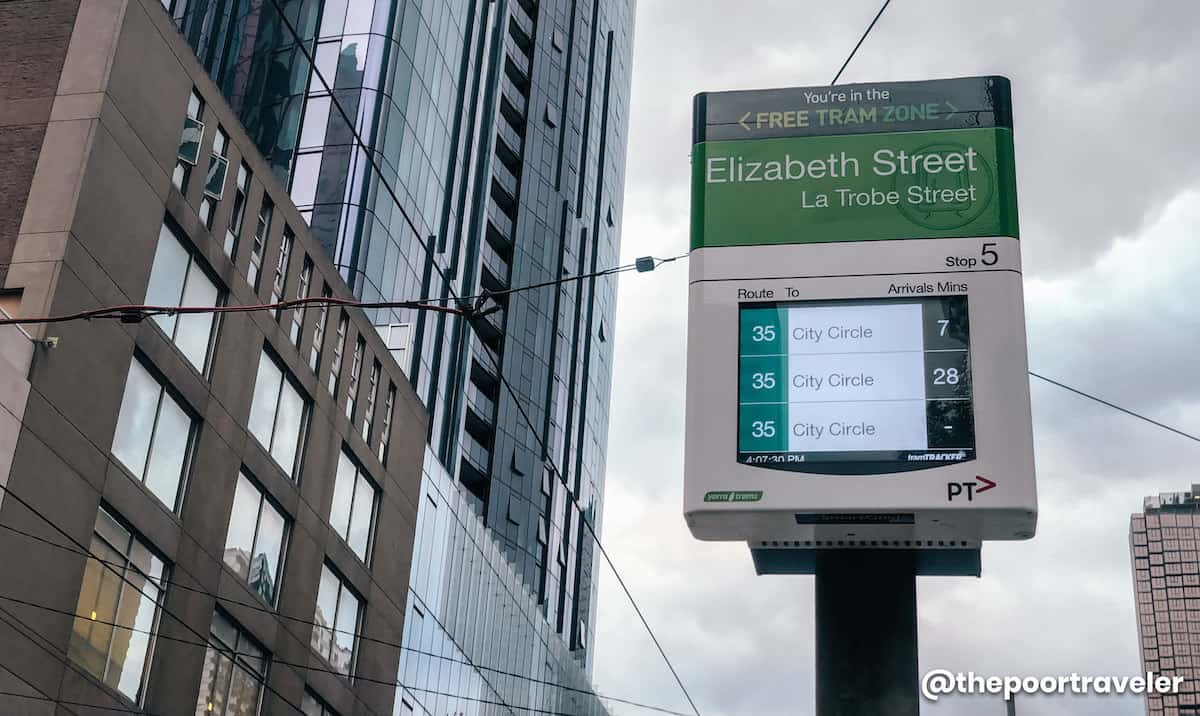
- Make your way to the tram station. There usually are timetables posted at each stop. Often, there’s also a digital screen announcing what trains are coming next and at what time. You can refer to this to make sure you’re boarding the right tram.
- When your tram arrives, hop in. If you’re traveling within the FREE tram zone, NO NEED TO TOUCH ON. If you’re traveling Zone 1+2, you must touch on. but you don’t need to touch off.
- When you reach your destination, NO NEED TO TOUCH OFF if you’re traveling Zone 1+2 or if within FREE Tram Zone. Touch off only if you’re traveling within Zone 2.
IMPORTANT! When traveling outside the free tram zone, don’t forget to touch on your myki. It’s actually easy to game the system and deliberately skip touching on to save dollars, but please DON’T do it . It’s also easy to forget to touch on. But bear in mind that sometimes, ticket officers show up and inspect random passengers’ cards. If you’re caught not paying the right fare, you may be fined around A$250! I’ve seen this first-hand at Werribee Station. Several ticket inspectors checked the myki of alighting bus passengers.
Other Transportation Options
Of course, the public transportation system isn’t perfect. Delays happen and some stations are sometimes temporarily closed for various reasons. One time, the tram that I was on had technical issues and all the passengers were asked to step out and wait for the next tram (which took forever to arrive). They don’t happen all the time, but if you’re in a hurry and you can afford it, you may take the taxi or Uber.
Uber is generally cheaper than taxi. I once tried taking a cab from Southern Cross to Central Station and I was charged A$ 10.60 for the ride. Another day, I used Uber on the same route and paid only A$ 8.60.
If traveling within CBD, I prefer walking. Melbourne is a very pretty city, with a distinct European vibe that other Australian cities don’t possess. You’ll also stumble upon delightful surprises like artful graffiti and food kiosks.
How to Get to Melbourne
From Manila, fly to Melbourne with Philippine Airlines. Travel time is only around 8 hours.
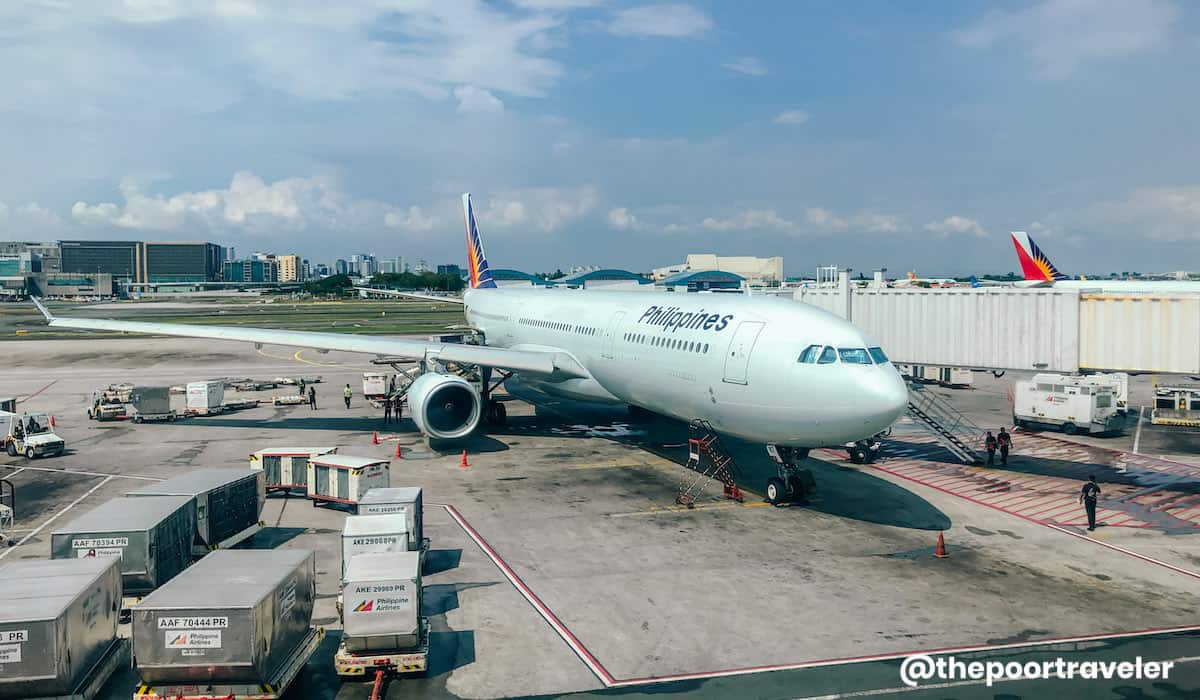
Regular fares can go as low as USD233 one-way, which can still go lower when there’s a promo. All bookings come with FREE 25kg baggage allowance and a hot meal, a snack, and complimentary alcoholic and non-alcoholic drinks.
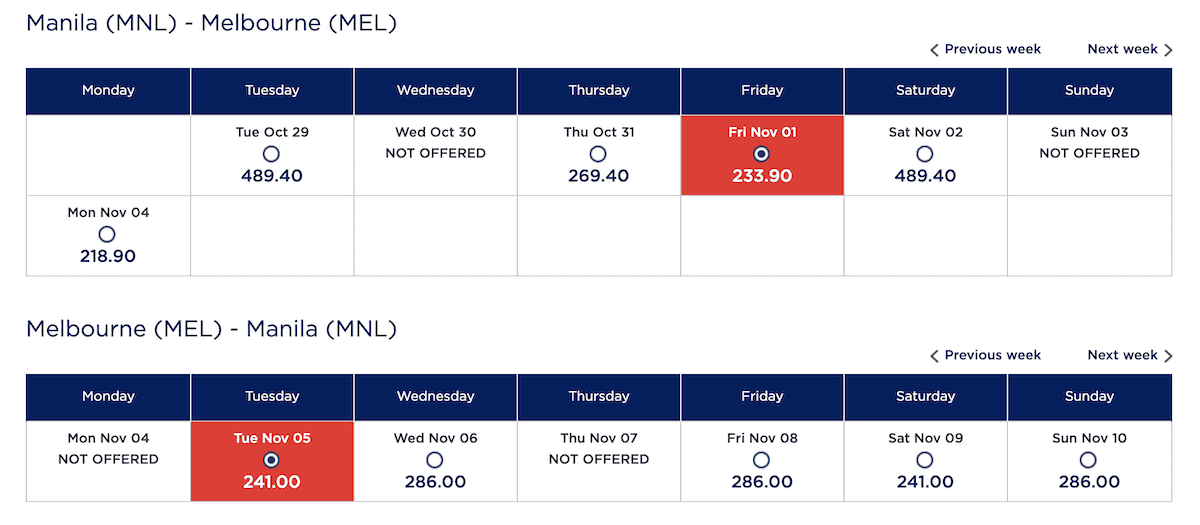
PAL, the country’s four-star flag-carrier, uses a 309-seater Airbus A330-300.
2️⃣0️⃣1️⃣9️⃣ • 6️⃣ • 3️⃣0️⃣
More Tips on YouTube ⬇️⬇️⬇️
Is this post helpful to you?

Related Posts:
- 5 Fantastic Things to Do in Melbourne
- MELBOURNE TRAVEL GUIDE with Budget Itinerary
- MELBOURNE AIRPORT TO CITY CENTER: The Cheapest & Easiest Way
- 8 Popular Stops in Litchfield National Park, Australia: A Day Tour Itinerary
- DARWIN ON A BUDGET: Free Itinerary & Travel Guide
- Australian Outback: Uluru Camel Tour at Sunrise
- Aboard the Derwent Hunter: Sailing Around the Whitsunday Islands, Australia
- BRISBANE TRAVEL GUIDE: Itinerary, Budget, Things to Do

- Recent Posts
- Where to Eat Cheap in BANGKOK • 12 Best Affordable Restaurants (including Michelin-Awarded Food Places) - 19 June 2024
- 2024 Cebu Pacific Promos & PISO SALE with Number of Seats Available - 10 June 2024
- 2024 Philippine Airlines PROMO: Get 50% OFF on PAL Domestic Flights! - 16 May 2024
Featured On

We heard you!
Your comment is now queued for moderation! We’ll try to get back to you soonest. While waiting, follow us on these channels.
Subscribe on Youtube! Follow us on Instagram!

🙌 Awesome, you're subscribed!
Thanks for subscribing! Look out for your first newsletter in your inbox soon!
Get us in your inbox
Sign up to our newsletter for the latest and greatest from your city and beyond
By entering your email address you agree to our Terms of Use and Privacy Policy and consent to receive emails from Time Out about news, events, offers and partner promotions.
Awesome, you're subscribed!
The best of Melbourne for free.
Sign up for our email to enjoy Melbourne without spending a thing (as well as some options when you’re feeling flush).
Déjà vu! We already have this email. Try another?
Love the mag?
Our newsletter hand-delivers the best bits to your inbox. Sign up to unlock our digital magazines and also receive the latest news, events, offers and partner promotions.
- Things to Do
- Food & Drink
- Arts & Culture Awards
- Coca-Cola Foodmarks
- Restaurants & Cafes
- Bars & Pubs
- Theatre & Dance
- Music & Nightlife
- Area Guides
- Competitions
- Los Angeles

A guide to Melbourne public transport
Explore Australia's cultural capital completely car free
Photograph: Liam Davies

Despite the local penchant for griping about the city’s public transport, Melbourne remains one of the best-connected cities in Australia. Like most major cities, we’ve got buses and trains , but what Melbourne is really known for is its extensive tram network.
Whether you opt for a tram, catch a bus or take a train, you can get pretty much anywhere in Melbourne without a car. All you need is an adventurous spirit and a Myki card – Melbourne's reusable public transport ticket you can buy or top up at metropolitan train stations as well as at some tram stops and bus interchanges.
RECOMMENDED: The unofficial rules for catching Melbourne public transport.
Been there, done that? Think again, my friend.
Public transport in Melbourne
1. trams.

Best for: Visitors hopping between CBD attractions or visiting the inner suburbs
Price: Free to $4.60 per trip (with a daily cap of $9.20)
Melbourne’s most iconic form of public transport is a novel treat for visitors. But because they’re not as common as trains or buses, there are a few tricks to using them right. You need to tap on (that is, hold your Myki card against the card reader) on trams, but you don't have to tap off. In the free tram zone (the Melbourne CBD; listen for announcements) you don’t need to tap on at all. This makes trams ideal for sightseeing in the city, and they travel out to some of the coolest inner-suburban hangouts as well. Trams sometimes stop suddenly, so make sure you hold on!
2. Trains

Best for: Those traveling long distances or going out to the ‘burbs.
Price: $4.60 per trip (with a daily cap of $9.20).
Melbourne’s trains are trams' beefcake older brother. They ferry people from the outer edges of Melbourne right through to the inner suburbs and CBD. Depending on where you are and where you’re going trains are sometimes a quicker option than trams or buses. But they can be packed to bursting during peak hour, so avoid traveling during the morning or evening commute if possible. Tap on at the station before boarding and tap off as you leave the station – and remember to press the button on the train door to get on and off.
3. Buses

Best for: Going further and getting closer.
Price : $4.60 per trip (with a daily cap of $9.20).
Buses are the unsung heroes of Melbourne’s rail-dominated public transport system. They might not have the same cachet as trams, but they cover more ground. You won’t find a tram that will take you directly to Australia’s biggest shopping centre, Chadstone, but a bus will. There are more routes for buses than trams, they travel further out into the suburbs, and they travel across the city more directly than other public transport options. Be sure to tap your Myki both on and off when using buses, and take your backpack off before boarding.
4. V/Line trains and coaches

Best for: Those day tripping from Melbourne or traveling to other parts of Victoria
Price: $4.60-$35 per trip
Where Melbourne’s trams, trains and buses fear to tread V/Line rushes in, no worries. Victoria's V/Line trains and coaches are your ticket to the state’s beautiful regional cities and towns. In the Melbourne CBD V/Line all services connect at Southern Cross Station, which in itself is easily accessed by tram or bus. From here you can catch a train or coach to the goldfields of Bendigo or Ballarat; to the springs of Daylesford; to the shorelines of Geelong or Warrnambool; or even interstate to Adelaide. Importantly, not all V/Line services use Myki so check the ticketing info before travelling.
Looking for travel inspo?
10 places in victoria that look nothing like victoria.
- Things to do

Think you’ve seen all of Victoria? Take a gander at some of the state's most unfamiliar locations, from ancient caves to European flower farms.
[image] [title]
Discover Time Out original video
- Acknowledgement of Country
- Press office
- Investor relations
- Work for Time Out
- Editorial guidelines
- Privacy notice
- Do not sell my information
- Cookie policy
- Accessibility statement
- Terms of use
- Reviews policy
- Competition terms
- About the site
- Modern slavery statement
- Manage cookies
- Advertising
- Report an error
- Time Out Market
Time Out products
- Time Out Worldwide
- Private Policy

Home travel Free Tram Ride? Getting Around Melbourne and VIC State
Free Tram Ride? Getting Around Melbourne and VIC State
By Blair Villanueva 10:00:00 AM

myki is the reusable travel card for trains, trams, and buses around Melbourne and parts of regional Victoria. Some regional towns in Victoria offer paper tickets and paid in cash.

myki EXPLORER
Buy your myki card and top-up.

Mobile myki
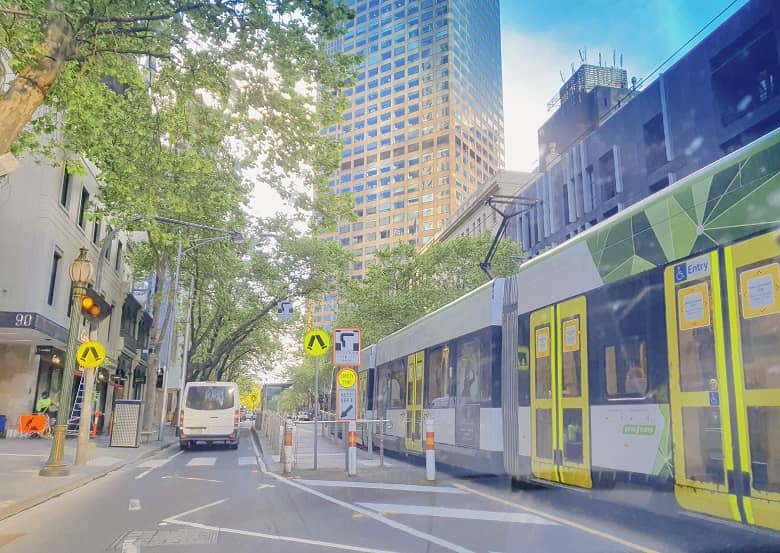
FREE Tram travel

Regional Victoria Trains

Victoria’s COVID Restriction Update:

Share this:
Similar articles, 27 comments :.

We visited Australia around 2 years back and had used myki for local travel in Victoria trams. Free tram rides is something that I didn't know about.
Free tram ride is awesome especially if you are just living in the CBD.
This was such a great post. So many travel posts tell you where to go, but you have to know HOW to get there.
Thanks for appreciating, Ben!
That sounds like a great way to get around the city. I always use trains and other public transportation when I travel. It's the best way to get a feel of the area.
I agree and it is affordable. Victoria's PT trains are also reliable and clean :)
I love it! Public transportation is the best way to get around a city when you're traveling.
Imagine the costs of parking fee nowadays?!
myki sound like a great way to experience the city. I've always loved using public transportation when I travel. It's so much better than trying to navigate by car.
I often wish we lived in a city like this so that we had this option. Tram is a great way to get around.
Hope you will visit Australia soon!
I always love taking public transport when I visit a new city. The train and tram there looks so beautiful. Thanks for showing us part of Melbourne. Hopefully I can visit there one day.
The free trams are good too! We rarely use it coz we prefer walking or take the car.
i love using public transport when visiting any city. it helps to reduce pollution kind regards Pati Robins @ style squeeze blog
I agree with you. Due to COVID, we rarely use the public transport even it is well maintained.
Great post. Thanks for the tips! Really makes me want to travel again and get some sun and travel energy!
That myki card is very convenient.
Gosh! I miss Melbourne! Can't wait to go back. I miss the free tram! Haha!
You should visit again soon!
Tramways are awesome. I wish we had some in my city but they are building a monorail instead.
I agree, hope many city will have tramways too.
Melbourne seems like an amazing city. I'd like to visit there sometimes, preferably during Australian Open so I can watch that as well
Aww Australia Open I miss that this year, because of COVID, but I downloaded their app and now keeps me update about each game. My girl, Naomi Osaka is reigning Australian Open.
This is nnniiiccceeeeee, Blair! I would love to travel in that tram! It looks so cool and spacious.
Yes it is! Australia will be open eventually to international travel.
This looks like a fab way to get around the city to explore and enjoy all that Melbourne has to offer.
Yes it is. The train system is also reliable.
SUBSCRIBE ON OUR CHANNEL!

Best Women's Travel Blog 2024 - Australia

FOLLOW US ON TIKTOK!
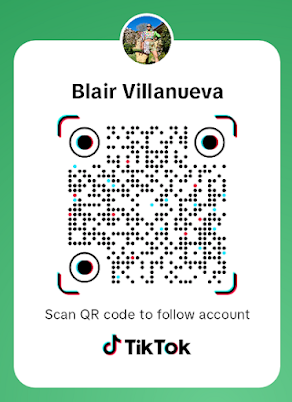
Going to Japan? Book your Shinkansen Now!
Book your hotels now, popular posts.

HOW TO APPLY FOR AUSTRALIA VISITOR VISA SUBCLASS 600

How to Renew Philippine Passport in Australia

How to get your documents certified in Australia
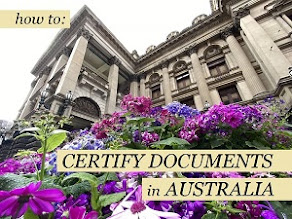
How to Apply for CFO Certificate in the Philippines
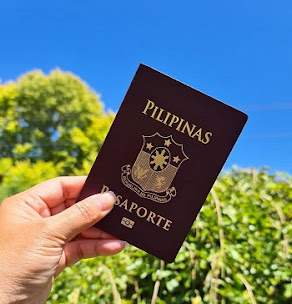
How to Apply for Australian Federal Police Check
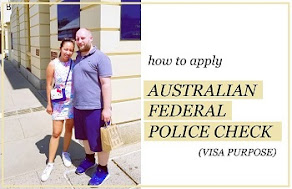
LOOM FOOTWEAR, 10% OFF

Awarded Best Australian Women's Blog
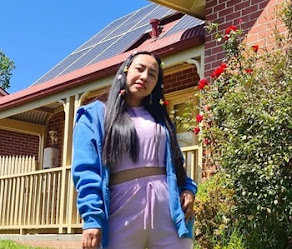
The ultimate guide to getting around Melbourne
Nov 22, 2023 • 7 min read

Melbourne's trams have become intertwined with the city's identity, especially the City Circle line © Craig Dingle / Shutterstock
As a progressive metropolis that regularly tops rankings of the world’s most livable cities, you might expect Melbourne to be a breeze to navigate – and you wouldn’t be wrong.
Although Greater Melbourne is a sprawl that can take hours to cross without a car, most major attractions are concentrated in the city center (also known as the central business district or CBD) and its surrounding neighborhoods .
This part of the city is well-serviced by public transportation, including the world’s longest tram network. These areas are also highly walkable and bikeable, a quality aided by relatively flat terrain and the availability of bike rentals. And for attractions further afield, trains, trams, buses and even boats carry you to them with ease.
To help you experience everything the city has to offer, here’s our guide to getting around in Melbourne.
Use a Myki card to get moving
To collect fares, Melbourne’s trains, trams and buses use Myki , a touch-on, touch-off system with card readers located aboard trams, buses and on train station platforms.
It’s the only way to pay for public transit and should be one of your first purchases on arrival. Standard Myki cards cost $6 and can be purchased and topped with credit at convenience stores and staffed train stations, or from dedicated vending machines at stations and major tram stops. There are also Myki vending machines within Terminals 2, 3 and 4 at the Melbourne Airport.
If you have an Android phone, you can use your phone to tap on and off using Myki via the Wallet app . An app for iPhone users does not yet exist.
The standard two-hour fare across Melbourne is $5, and there’s a daily fare cap of $10 on weekdays and $7.20 on weekends. You can either pay as you go from your credit balance or purchase a seven-day unlimited travel Myki Pass ($50).
Note that there are large fines for traveling without having touched on a valid Myki card, and ticket inspectors are unforgiving and sometimes undercover.
For timetables, maps and a journey planner, visit Public Transport Victoria (PTV). Handy transport planning apps include PTV , tramTRACKER and CityMapper .
Visitors also have the option of a Myki Explorer pack ($16), which includes the card, one day's travel credit and discounts on various attractions including several museums. It's available from SkyBus terminals, the PTV Hub at Southern Cross Station and some hotels.

Catch an iconic tram through eclectic neighborhoods
Trams are both a practical means of transport and a quintessential Melbourne experience. They run roughly every 10 to 12 minutes during the day (more frequently in peak periods) and every 15 minutes in the evening. Services operate until around 12:30am Sunday to Thursday and 1am Friday and Saturday on most lines. A night service is also available (every 30 minutes) on Friday and Saturday on a handful of lines.
All aboard for a free introduction to the city center
Trams are free to ride within the Free Tram Zone in the city center. The zone is signposted on tram stops, with announcements made when you're nearing its edge.
One tram route entirely within the Free Tram Zone is the City Circle (route 35), on which delightfully retro W-class trams follow a clockwise circuit around the CBD and Docklands.
Ride the train network to speed across the city
Melbourne’s suburban trains are the fastest and most comfortable way to travel significant distances across the city. Flinders Street Station and Southern Cross Station are the main downtown hubs for Melbourne's 17 train lines, which radiate out to the suburbs.
Trains start operating around 5am on weekdays, run until after midnight Sunday to Thursday, and all night on Friday and Saturday nights. Trains generally run every 10 to 20 minutes during the day, every 20 to 30 minutes in the evening and more frequently during peak periods.
Use the bus – or night bus – to reach your destination
Melbourne has an extensive bus network, with over 300 routes covering places trains and trams don't go. Most routes run from 6am to 9pm on weekdays, 8am to 9pm on Saturdays, and 9am to 9pm on Sundays. Night Bus services operate after midnight on weekends to many suburbs. You need to hail buses as they approach your stop, so the driver knows you want to board.

Explore Melbourne’s parks and streets on two wheels
Melbourne is up there with the most cycle-friendly cities in Australia, with work ongoing to improve the infrastructure. Bikes can be rented from outlets including Blue Tongue Bikes , BikeNow and Port Melbourne Cycles . Though conventional bikes can be taken on trains (but not the first carriage), only folding bikes are allowed on trams or buses. Helmets are compulsory for cyclists.
Some of Melbourne's cycle paths head through lush parklands, beside shaded creeks and along rivers. Detailed cycle maps are available from the Melbourne Visitor Hub at the Melbourne Town Hall .
Since 2022, Melbourne has also been trialing an e-scooter share scheme in the city center and surrounding neighborhoods. Helmets must be worn while using e-scooters and they must be ridden on roads only. To zip around on one, download the Lime or Neuron apps.
Car rentals are best left to adventures further afield
Cars tend to be more of a hindrance than a help when exploring Melbourne, as parking is difficult to find and expensive (even at hotels) and roads are busy. You’ll also have to contend with trams sharing the street and the distinctive road rules that apply to them.
For example, there’s Melbourne’s infamous “hook turn,” in which cars wanting to turn right across a tram line must first pull over on the far left of the street, in order not to block trams. Unless you’re planning to drive into the countryside – such as along the Great Ocean Road – you might prefer to stick to public transportation. If you do decide to drive, see Vic Roads for further details on local road rules.
In Melbourne itself, most street parking is metered and parking inspectors are particularly vigilant in the city center and popular nearby suburbs such as St Kilda, Collingwood and Fitzroy. Motorcyclists are allowed to park on the sidewalk, except in some parts of the city center where there are signs.
Cars and campervans can be rented from companies such as Jucy , Avis , Hertz and Rent a Bomb (“bomb” being Aussie slang for an old car). Motorbike rental spots include Moto Sparta north of the city center and EagleRider Melbourne in eastern Ringwood.
Summon taxis and ride-hailing services if you're short on time
Melbourne’s taxis are metered and require an estimated prepaid fare when hailed between 10pm and 5am; one of the taxi ranks most likely to have a vehicle waiting is next to Flinders St Station on Swanston St.
Two of the largest taxi companies are Silver Top and 13 Cabs , both of which have booking apps. Several ride-hailing services also operate, such as Uber , DiDi , and Shebah , the latter of which features an all-female fleet of drivers offering rides for women and children.

Set sail to see Melbourne from the water
Though boats are a less-used form of transport, it’s a fun way to see the city and get around. Melbourne Water Taxis conveys clients along the Yarra and Maribyrnong Rivers, while other passenger boats link the Southbank promenade and Williamstown's Gem Pier several times a day. The charming Westgate Punt carries pedestrians and cyclists across the Yarra between Port Melbourne and Spotswood.
Accessible transportation in Melbourne
All trains and most buses are accessible by way of ramps. If using trains, you need to be at the front of the platform so the driver can see you and put the ramp out.
Trams are more hit-and-miss – many vehicles and stops are low-floor and wheelchair-accessible, but less so outside the CBD. The free tramTRACKER app displays a wheelchair icon to indicate approaching low-floor trams. The journey planner on the PTV website has a useful filter for wheelchair-accessible services and stops.
13 Cabs offers wheelchair-accessible taxis , but be aware that you may have to wait a long time, especially during peak hours and in the evenings.
Holders of current and valid interstate or overseas disability parking permits may park in reserved disability parking spaces for the specified time, and may also park in regular parking bays for twice the specified time upon payment of applicable parking fees (often waived for permit holders – see signs on parking meters for confirmation).
Elsewhere, sidewalks are generally in good repair and curb cuts are standard, as are tactile paving markers. Pedestrian crossings feature sound cues and accessible buttons.
Travellers Aid centers inside Flinders Street Station and Southern Cross Station are particularly helpful for those with mobility issues and offer a variety of facilities for travelers, including fully accessible toilets, wheelchair/scooter recharging facilities, and wheelchair/scooter hire.
This article was first published Jun 15, 2021 and updated Nov 22, 2023.
Explore related stories

Sustainable Travel
Oct 28, 2023 • 7 min read
From forest trails to steam railways, these inspiring spots around Melbourne make for great day trips, and none of them require a car to reach.

Jun 20, 2024 • 6 min read

Feb 27, 2024 • 6 min read

Feb 9, 2024 • 12 min read

Dec 3, 2023 • 8 min read

Nov 29, 2023 • 10 min read

Nov 27, 2023 • 7 min read

Nov 27, 2023 • 8 min read

Nov 20, 2023 • 6 min read

Nov 10, 2023 • 8 min read

Australia Recommends 2024

Come and Say G'day

G'day, the short film

Discover your Australia

Travel videos

Deals and offers

Australian Capital Territory

New South Wales

Northern Territory

South Australia

Western Australia

External Territories

The Whitsundays

Mornington Peninsula

Port Douglas

Ningaloo Reef

Airlie Beach

Kangaroo Island

Rottnest Island

Hamilton Island

Lord Howe Island

Tiwi Islands

Phillip Island

Bruny Island

Margaret River

Barossa Valley

The Grampians

Hunter Valley

McLaren Vale

Glass House Mountains

Alice Springs

Uluru and Kata Tjuta

The Kimberley

Flinders Ranges

Kakadu National Park

Eyre Peninsula

Karijini National Park

Great Barrier Reef

Blue Mountains

Daintree Rainforest

Great Ocean Road

Purnululu National Park

Cradle Mountain-Lake St Clair National Park

Litchfield National Park

Aboriginal experiences

Arts and culture

Festivals and events

Food and drink

Adventure and sports

Walks and hikes

Road trips and drives

Beaches and islands

Nature and national parks

Eco-friendly travel

Health and wellness

Family travel

Family destinations

Family road trips

Backpacking

Work and holiday

Beginner's guide

Accessible travel

Planning tips

Trip planner

Australian budget guide

Itinerary planner

Find a travel agent

Find accommodation

Find transport

Visitor information centres
Deals and travel packages

Visa and entry requirements FAQ

Customs and biosecurity

Working Holiday Maker visas

Facts about Australia

Experiences that will make you feel like an Aussie

People and culture

Health and safety FAQ

Cities, states & territories

Iconic places and attractions

When is the best time to visit Australia?

Seasonal travel

Events and festivals

School holidays

Public holidays
How to get to Australia's most iconic cities

How long do I need for my trip to Australia?

How to travel around Australia

Guide to driving in Australia

How to hire a car or campervan

How to plan a family road trip

How to plan an outback road trip

Flinders Street Station, Melbourne, Victoria © Josie Withers Photography
Getting around Melbourne
Whether you self-drive or take advantage of Melbourne’s efficient public transport system, you’ll find it easy and efficient to get around the city.
By Mark Sariban
Australia’s cities all offer clean, efficient and affordable public transport options, allowing visitors to explore with ease and comfort. Known for its historic suburban tram system, Melbourne is no exception to this rule. Jump on board any of these great transport options and discover how easy it is to get around Melbourne.
Transport in Melbourne

St Paul's Cathedral, Swanston Street, Melbourne, Victoria © Josie Withers Photography
- Airport Transfers
- Accessibility
Melbourne offers free tram rides within the city centre. To use public transport outside of the free tram zone, you need to purchase a myki card . You can purchase a myki card from retail outlets displaying the myki sign, visitor centres and at train stations.
- Use your myki card on trains, trams and buses. You’ll need to load your card with some money to cover your fares. You can top it up at convenience stores and train stations as your balance runs low.
- You can also purchase a myki Explorer kit, which includes a myki card loaded with a full day of unlimited travel on trains, trams and buses in metropolitan Melbourne, handy maps and discounts on tickets to major attractions.
- To start your ride, tap your myki card on the reader when you board your selected mode of transport and be sure to tap off when you disembark.
Melbourne is serviced by two airports, Melbourne Airport (MEL) and Avalon Airport (AVV). There are several public transport options available for reaching the city from either airport.
- SkyBus express services run between 4am and 1am daily from Melbourne Airport and from early morning to evening from Avalon Airport. Both SkyBus services stop at Southern Cross Station on Spencer Street in the city. Tickets can be purchased either online or at the airport.
- You’ll find taxi ranks and rideshare pick-up areas at the front of each terminal – simply follow the signage. The journey to the city from Melbourne Airport takes around 30 minutes, or 50 minutes from Avalon Airport.
Tip: If you’re in a group, it will be less expensive to travel from Melbourne Airport to the city by taxi or rideshare.
In Australia, airlines, trains, buses and ferries have accessible options for people using a wheelchair or mobility device.
- Melbourne Airport provides special assistance for people with disabilities and can help with baggage, getting around the airport, and getting on and off the plane.
- The majority of buses and trains have accessible options – check the Public Transport Victoria Accessibility page for information on using public transport before your trip.
Tip: Download the City of Melbourne’s mobility map to easily locate accessible toilets and car parks in the city.
Getting around Melbourne on public transport

Collins Street, Melbourne, Victoria © Josie Withers Photography
Trains are a great way to visit attractions across the city and reach the surrounding suburb. Major stations in the city include Central, Flinders and Southern Cross Station. Use the Journey planner tool to find your route.
- Trains to regional destinations including Geelong, Ballarat, Bendigo and Albury operate on the V/Line services. You can use your myki card on all train networks.
Catching a tram is a great way to get around Melbourne while getting a feel for the city. Use the Journey planner tool to find your route.
- A Free Tram Zone operates in Melbourne city centre. If your travel is within this zone you don’t need to tap on or off with your myki card.
- The free hop-on, hop-off City Circle Tram (number 35) is a great introduction to Melbourne, with city loop services running every 15 minutes.
- Melbourne’s suburban tram routes run in two zones, with the cost using your myki card calculated according to the zones you travel in.
The bus network is another efficient way of hopping around metro Melbourne and popular neighbourhoods. Use the Journey planner tool to find your route.
- Night Network trains, trams and buses operate throughout the night on Fridays and Saturdays.
Getting around Melbourne by car

Flinders Lane, Melbourne, Victoria © Josie Withers Photography
Driving in Melbourne is easy and safe, but you may want to check whether your hotel charges a daily parking fee.
Melbourne is the only city in Australia with a ‘ hook turn ’ (a right-hand turn you make from the left-hand lane), so be sure to familiarise yourself with this manoeuvre if you’re planning to drive in the city.
Having a car for part of your trip may be beneficial if you plan to visit some of the stunning destinations outside of Melbourne, but you can also book tours to many of these places and leave the driving to someone else.
Tip: If you’re hiring an electric vehicle, you’ll find a map of charging stations here.
Melbourne is served by numerous taxi companies.
- You can hail a taxi on the street (a taxi is available if its rooftop light is on) or at taxi ranks in built-up areas.
- You can also book a taxi by phoning individual companies, or by downloading an app from 13cabs or GoCatch .
Tip: You will be asked to pre-pay an estimated fare when riding in a taxi after 10pm.
Most major ridesharing platforms operate in Melbourne, including Uber , Ola and DiDi , as well as local operator GoCatch .
Tip: Female travellers can also book a ride with Shebah , a rideshare service with all-women drivers catering to women. (Adult men can use the service if they need to transport a child who requires an approved child safety seat.)
Make the most of your time in Melbourne with a guided tour . Many tour operators offer half-day and full-day driving tours of the city and surrounds, including Show Me Melbourne and Melbourne Private Tours .
- Enjoy an emissions-free sightseeing tour of Melbourne by pedicab with Green Cabs .

Where to stay in Melbourne
Other forms of transport in Melbourne

Southbank, Melbourne, Victoria © Josie Withers Photography
- Water taxis
- Cycling & scooting
- Williamstown Ferries offers two-hour cruises from Southbank to Williamstown, a seaport at the mouth of the Yarra River.
If you’re in town for a sporting event or a stadium concert, you can catch a water taxi from Southbank to Melbourne’s sports precinct .
Melbourne is mostly flat and has an extensive network of bike paths, making it easy to cycle around the city.
- Download an app from Neuron to access a pool of shared e-scooters across Melbourne.
More articles like this

We use cookies on this site to enhance your user experience. Find out more . By clicking any link on this page you are giving your consent for us to set cookies.
Acknowledgement of Country

We acknowledge the Traditional Aboriginal and Torres Strait Islander Owners of the land, sea and waters of the Australian continent, and recognise their custodianship of culture and Country for over 60,000 years.
- New Zealand (English)
- United States (English)
- Canada (English)
- United Kingdom (English)
- India (English)
- Malaysia (English)
- Singapore (English)
- Indonesia (Bahasa Indonesia)
- Deutschland (Deutsch)
- France (Français)
- Italia (Italiano)
- 中国大陆 (简体中文)
*Product Disclaimer: Tourism Australia is not the owner, operator, advertiser or promoter of the listed products and services. Information on listed products and services, including Covid-safe accreditations, are provided by the third-party operator on their website or as published on Australian Tourism Data Warehouse where applicable. Rates are indicative based on the minimum and maximum available prices of products and services. Please visit the operator’s website for further information. All prices quoted are in Australian dollars (AUD). Tourism Australia makes no representations whatsoever about any other websites which you may access through its websites such as australia.com. Some websites which are linked to the Tourism Australia website are independent from Tourism Australia and are not under the control of Tourism Australia. Tourism Australia does not endorse or accept any responsibility for the use of websites which are owned or operated by third parties and makes no representation or warranty in relation to the standard, class or fitness for purpose of any services, nor does it endorse or in any respect warrant any products or services by virtue of any information, material or content linked from or to this site.

Myki Q+A: Straight answers to your questions
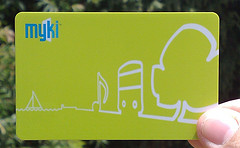
Updated July 2023
Now that almost all public transport users in Victoria have to use the trouble-plagued Myki ticketing system, people need simple answers to basic questions about it. This page is an effort to explain how the Myki system works, and answer the main questions we are asked.
Where can I get a Myki?
Cards can be obtained online or by phone ( 1800 800 007 6am – midnight daily). You can also get them from Myki Card Vending Machines (which are located at railway stations, some tram platform stops, and some major bus interchanges), from staff at Premium (staffed) stations , staffed V/Line station (within the Myki boundary), or from PTV Hubs , which are at Southern Cross station, Westfield Shopping Centre, Geelong, and Bendigo Marketplace, Bendigo.
Mykis can also be purchased at many metropolitan retail outlets and some country retail outlets, particularly, but not exclusively, 7-Eleven stores, as well as some Australia Post outlets in major regional centres. See here to get the location details of retailers selling Myki.
V/Line conductors sell full-fare or concession Mykis, pre-loaded with Myki Money, for travel to and from V/Line stations between Melbourne and Geelong, Ballarat, Bendigo, Traralgon and Seymour.
Note that only full-fare Mykis can be purchased from Myki vending machines. Concession, child and seniors Mykis must be bought from the other outlets listed above.
Also note that bus drivers are no longer able to sell or top up Mykis.
How much does getting a Myki card cost?
The cost of a card is $6 full fare, or $3 concession. The purchase price is not refundable. People who become eligible for a free Seniors Myki should apply for one as part of their application for a Seniors Card .
Note that Myki Card Vending Machines only dispense full-fare cards. Concession, child and Seniors cards can be obtained from staffed railway stations, retail outlets, at a PTV Hub , or online. More information on where to get a Myki card .
For those with compatible phones, Myki Mobile is free. See below.

Where can I add money to my Myki card?
You can top up your Myki at all the places where you can buy a card, except for locations in regional Victoria that only sell myki cards pre-loaded with some credit.
Bus drivers no longer sell or top up Myki cards.
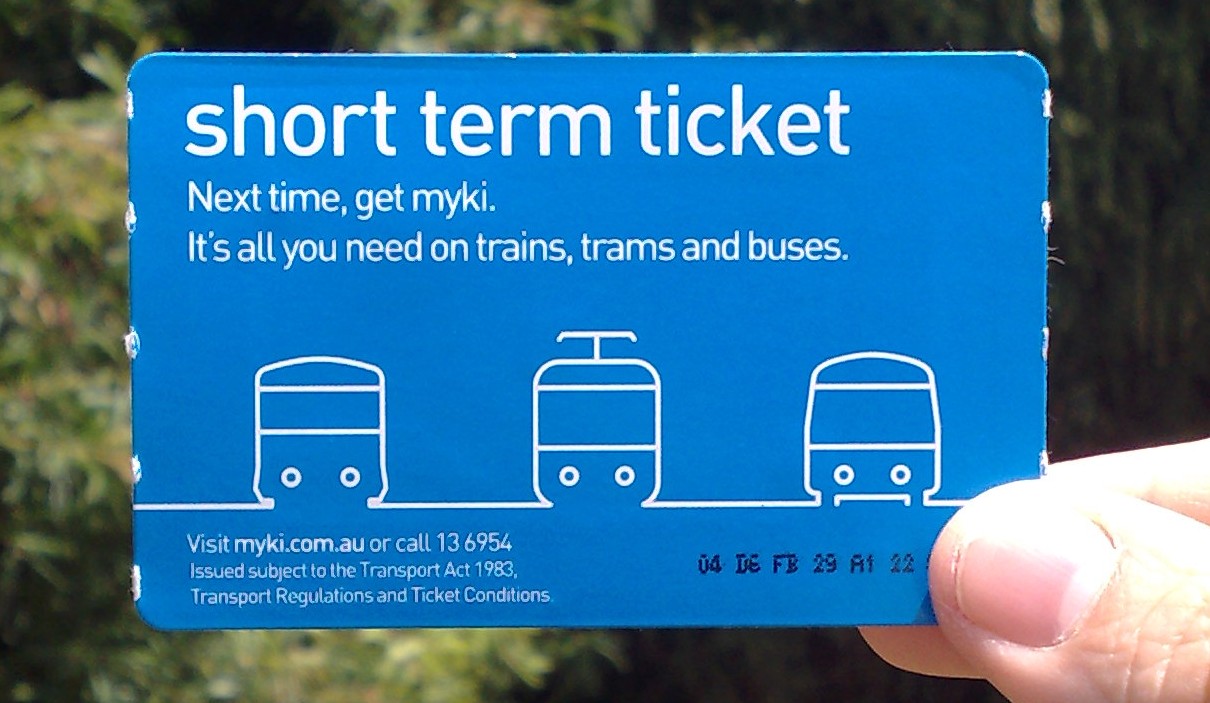
Why can’t I get a short-term ticket?
A short-term ticket (pictured) was going to be available if you didn’t have a Myki, but for reasons never explained, the state government decided that short-term tickets would not be introduced in Melbourne, and they were then abolished on regional city bus networks.
With no short-term alternative, anyone wanting to use public transport in Melbourne must have a reusable Myki card with sufficient credit loaded on it, even if they only travel every now and again.
That ridiculous decision means that the PTUA receives regular complaints about the difficulty occasional travellers have in trying to get or use a ticket.
Even regular public transport users can strike problems. If they forget to have their Myki with them they have to buy another one and put money on it. If their Myki becomes defective, unless they can get to a staffed railway station or PTV Hub, people have to wait for up to ten business days for a new Myki to be issued to them. In the meantime, if they want to travel they have to buy another card and put money on it.
The convenience of short-term tickets is obvious. Before their abolition on major regional city bus networks in mid-April 2013, up to sixty percent of passengers were using them.
How does Myki Money work?
Note: Fares increased by almost 9% on 1 July 2023. For the first time in seven years, regional town bus fares also increased, to $2.60 for a two-hour fare or $5.20 for a daily fare.
You buy a re-usable Myki card and load credit onto it. As you travel you touch on and touch off, and the system will debit your Myki card as you go. Melbourne metropolitan fares are shown in the following table. Regional fares differ from this. For full details of fares see the relevant page of the PTV web site .
Concession fares are 50% of the above prices. Discounts (e.g. Earlybird free travel on trains before 7 a.m.* and Weekend Cap $7.20) apply to Myki Money.
Note that the 2-hour period is exactly that and is timed from the moment you touch on. However, if you touch on after 6 p.m., the 2-hour fare applies until 3 a.m. the next day.
A “daily cap” applies: if you make multiple trips in one day, the system charges you a maximum of two 2-hour segments, e.g. the Daily fare.
If your travel is eligible for the Weekend Saver daily fare (Saturdays, Sundays and public holidays), then Myki charges you a maximum of $7.20 per day ($3.60 concession). If you’re a Senior, the weekday daily cap is $5.00 ($3.60 on public holidays), but on weekends, Seniors receive free travel for trips entirely within one or in two consecutive zones (including within Zones 1 and 2), and on regional town bus services. Note that even though Seniors are not charged under those circumstances, they are still required to touch on and off.
*Under Earlybird there is a 15-minute grace period to allow for late trains, so Myki gives you free travel on trains if you touch on and touch off by 7:15 a.m.
How does Myki Pass work?
Note: Fares increased by almost 9% on 1 July 2023.
Myki Pass is what used to be called a periodical ticket. You buy the normal Myki card and then choose to add credit to convert it into a periodical “pass” for your chosen period — for 7 days, or anything from 28 to 365 days — for the zone or zones you want. Note that these are consecutive days, and are not related to calendar months.
So the price for a “monthly” Pass is based on a particular number of days, not on a calendar month (where the number of days varies).
Current Melbourne metropolitan fares are shown in the following table. Because travel across Zones 1 and 2 costs the same as a Zone 1 fare, Zone-1-only passes are not available. Passengers need to purchase a Zone 1 + 2 pass, which costs no extra. Regional fares differ from this. For full details of fares see the relevant page of the PTV web site .
Concession fares are 50% of the above prices. Although only the 30 and 325+ day prices are listed above, you can buy a Pass for anything from 28 to 365 days. For full pricing details see the PTV web site , or the Victorian Fares and Ticketing Manual .
*Note that you can get a discounted Yearly Pass via the PTUA Commuter Club , which provides more than a 9% reduction on the retail price of a 365-day Myki Pass shown above. Commuter Club Mykis are specially-coded Myki cards which are provided free with the discounted Yearly fare.
Can I combine Myki Pass and Myki Money?
Yes. A single Myki card can have a Myki Pass for travel in your usual zone or zones, and also have Myki Money loaded on it for occasional trips into other zones, including V/Line services.
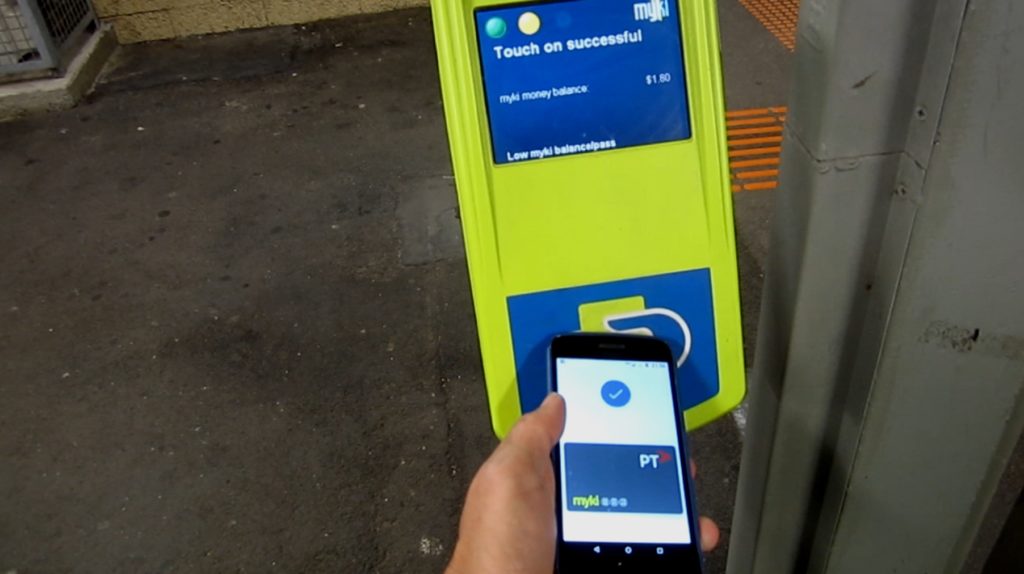
What is Mobile Myki?
Mobile Myki is a way of paying Myki fares using a mobile phone.
It is available on phones with recent versions of Android (5.0 and higher) that have NFC (Near-Field Communication). NFC is used by the phone to communicate with Myki readers so you can touch-on and off as you travel.
Mobile Myki works within the Google Pay application. You can use it to create an adult or concession virtual Myki card on your phone. Unlike a physical card, it is free, but it does need to be linked to a credit card in Google Pay. Once set up, it can be loaded with Myki Money or some types of Myki Pass.
You can then use your phone to touch on and off. The phone does not need to be unlocked, but you may need to make sure it’s “awake”.
There are more details on how to set it up on the PTV web site .
How fast is Mobile Myki for touching on and off?
Mobile Myki can be a little slow, and you need to get used to best way of touching using your phone, which is a bit different to touching a card.
The system relies on your phone’s NFC chip communicating with the Myki readers. Different phones have their NFC chip in different positions. It’s worth finding out where it is on your phone so you can hold it closest to the reader to get the quickest response.
We’ve found that, as with Myki cards, the newer card readers work better than the old green/yellow ones.
Is Mobile Myki the same as using a Myki card?
The fares are the same. You can load it with Myki Money, or some types of Myki Pass. Mobile Myki can be registered on the web site to view your travel history.
Passes on Mobile Myki can only be for 7, 28, 30, 31, 35, 40, 60 or 365 days. Mobile Myki can’t currently be used with discounted Passes, such as Student Passes, or with Commuter Club .
Unlike physical cards, topping up a Mobile Myki via Google Pay is instant. The money comes straight off the credit card you registered in Google Pay, and the new balance is written immediately onto the Mobile Myki “virtual card”.
Mobile Myki can be set to Auto Load. That works the same as Auto Top-Up on a physical Myki card – both add Myki Money when your balance falls below a value you have set. That is handy for those who use public transport regularly, but not frequently enough to use Myki Pass.
Mobile Myki should work on all Myki readers on stations, trams and buses, but it doesn’t work with Myki vending machines, nor on Myki Quick Top-up machines .
Is Mobile Myki available on iPhones?
Not yet. We understand PTV is working on it but there is no timeline.
What about paying using contactless credit cards?
That facility is available in some cities, such as Sydney and London , and is particularly useful for tourists. Unfortunately we’re not expecting this on Myki any time soon.
How does Myki work on V/Line?
Myki operates on V/Line’s so-called “commuter” services but the government has decided that Myki will not be used on what are now called “long-distance” railway services – those running beyond Geelong (Waurn Ponds), Ballarat (Wendouree), Bendigo (Eaglehawk or Epsom), Seymour and Traralgon – nor will Myki be used on any V/Line bus services. Those services continue to use paper tickets only.
The Family Traveller concession still requires a paper ticket, regardless of your destination. Available on most V/Line services, the Family Traveller allows one adult to be accompanied free by up to two children (aged 16 years and under) during off-peak times. At all other times, one child can travel free and one child needs to have a valid ticket. See here for more detailed terms and conditions.
V/Line passengers using Myki who travel in more than two zones (and that is the case for most V/Line journeys) must have:
- a Myki Pass for their entire journey and a Myki Money balance of at least $0.00; or
- a sufficient Myki Money on their card to pay for their entire journey; or
- a Myki Pass for part of their journey and sufficient Myki Money to pay for any remaining part of the journey.
V/Line Myki Pass users may travel to a destination beyond the Myki ticket area by purchasing a paper ticket extending their journey. However Myki Money users cannot use such a “hybrid” ticket. If their journey partly includes a service not covered by Myki, a paper ticket to cover their entire journey must be purchased prior to departure.
Under Myki, the concession which allows single (one-way) ticket holders one hour’s free travel in Zones 1 & 2 either side of their V/Line journey, and free Zone 1 & 2 travel all day for all other ticket types, including day return, continues to apply . Myki users must still touch on and off where required, but the Myki system will not charge anything over and above the fare already deducted. However passengers are urged to keep a close eye on their card balance to make sure the system always operates as required.
This same concession also applies to travel on the regional town bus systems on which Myki operates.
Passengers taking long journeys on V/Line commuter services are given additional time to complete their journey without incurring any extra fare. Note: Some increases in this allowance were made on 1 January 2016
- Travel across 3- 5 Zones : 2½ hours allowed
- Travel across 6-8 Zones: 3 hours allowed
- Travel across 9-11 Zones: 3½ hours allowed
- Travel across 12-13 Zones: 4 hours allowed
So a passenger who touches on in Zone 8 at 9.30 a.m. and touches off in Zone 1 at 11.15 a.m. (an 8-zone trip) pays a Zone 1-8 fare which expires at 12.30 p.m.
If touch-on occurs after 6.00 p.m. the fare does not expire until 3.00 a.m. the following day.
The discount fare for off-peak travel, which provides a 30% reduction over the normal fare, is available under Myki for all services timetabled to arrive in, and depart from, Melbourne outside the designated peak times.
To obtain the off-peak concession, V/Line passengers using Myki should not touch on at a station in the morning before the off-peak period commences. In the evening a 15-minute “grace period” applies. Although the off-peak period starts at 18:00 (6 p.m.), a passenger using a V/Line train can touch on after 17:45 (5:45 p.m.) and still obtain the off-peak fare.
For full pricing details see the relevant table in the Victorian Fares and Ticketing Manual .
Does the PTUA provide discounted Yearly tickets under the Commuter Club scheme?
Yes. PTUA members who are regular public transport users can buy discounted Yearly tickets, at about 9% off the retail price, and that includes a free Myki card. You can see full details of the offer here . Commuter Club is also available via some employers.
Note that Commuter Club is only a Melbourne metropolitan program. Even though Myki is used on V/Line commuter services, Public Transport Victoria says there is no plan to extend Commuter Club availability beyond the metropolitan area.
However, passengers travelling to Melbourne from Zone 2 stations which are only served by V/Line trains, such as Tarneit, Wyndham Vale or Melton, are eligible for Commuter Club.
Other V/Line passengers can purchase a 365-day Myki Pass at a heavily discounted rate, which includes up to 40 days free travel.
What should I do if my Myki card is lost or stolen?
If your Myki card is registered and it is lost or stolen, report that as soon as possible by calling 1800 800 007, or logging on to your online Myki account, or going a PTV Hub. Hubs are located at Southern Cross station, at 750 Collins Street, Docklands, and in Geelong and Bendigo. Your balance is protected from the time you report the problem.
If your Myki isn’t registered and you lose it, you can’t protect the balance, or transfer any balance to a new card.
You can organise a replacement for a registered card from any of above locations, and the balance on your lost card will be transferred to the new one. You can’t get a replacment card from a railway station.
When applying for a new card online, go to “My Myki account”, click on “My transactions”, scroll to the bottom of the page to “Card utilities”, and click on “Report lost or stolen Myki”.
If applying over the phone, you will need the card number, your account details and your Myki security code – the four digit number that was sent to you in an email when you first purchased/registered your Myki card.
What do I do if my Myki is faulty or damaged?
If your card stops working or is damaged, you can replace it at a Premium Metro station, a staffed V/Line station within the Myki boundary, a PTV Hub, over the phone, or online. However, if the damage is such that the card can’t be read, the balance can’t be immediately transferred to your new card, so you’ll have to top up the new card with Myki Money or a Myki Pass in the meantime.
In that case, it will take up to 36 hours to transfer a Myki Pass to your new card, and up to 7 days to transfer any Myki Money to your new card.
You can also post a damaged or defective card to PTV for replacement. You will need to print out the Replacement Request Receipt and post it along with the Myki you want to replace. It will take at least 10 business days for the new card, preloaded with any remaining balance, to be sent back to you.
Can I get a refund if I no longer need the Myki Pass I purchased?
You can apply for a refund of a partly-used Myki Pass or an unused Myki Pass, as well as unused Myki Money. You can either do that by filling out an online application , or by completing the paper Myki Refund & Reimbursement Form . However refunds are not available on expired Passes, and you cannot get a refund of the purchase price of a Myki ($6 or $3 concession) .
Note that if you use the paper from you must return your Myki card with it. In that case, you will need to have another Myki card in order to travel, because of the government’s stupid decision not to include the planned short-term ticket in the Myki system.
The refunded amount can either be sent to you as a cheque, or the unused funds can be transferred to another Myki. You can also convert Myki Pass credit to Myki Money, although an amount over $250 can only be paid by cheque.
It takes up to 10 business days for a Myki Pass to be converted to Myki Money and up to 21 business days for cheque refunds to be processed.
Can Myki be used to track my movements?
You can choose to register your Myki, or not, as you wish.
It is possible to get a card completely anonymously from Myki vending machines or over the counter. Unregistered cards get access to the same fares.
If you register your card you are protected against theft or the loss of the card, because you can report the loss, have your Myki deactivated, and have the remaining credit balance transferred to a new card. You can also set a registered card to be topped up automatically with money from your bank account.
Public Transport Victoria (PTV) has published a privacy policy which goes into some detail about when they might provide someone’s travel data to authorities. You can read it here .
Can someone else use my Myki card?
It is perfectly legal for other people to use your Myki, provided that it only has Myki Money loaded on it. However, you are not allowed to share your card if Myki Pass is loaded on it.
Does the credit on my Myki expire if I haven’t used it for 90 days?
No it does not. That idea is widespread but completely false.
However, if you top up your card using the Myki web site, and do not “collect” that money onto your card (e.g. touch your card on a reader, or check the balance at a vending machine) within 90 days, the system “archives” that top-up amount (and only that top-up amount), meaning that you can no longer access that money immediately to add to the balance on your card.
When you use your card on the system again (for example, touch it on a reader or use it at a vending machine), your archived top-up will be re-activated, and sent out again to readers and vending machines. You will then be able to “collect” the archived amount onto your card.
Note however, that the reactivation process can take up to 24 hours, so if your balance is too low to allow you to travel, you will need to top up your card immediately (for instance at a vending machine) if you want to use it there and then.
Can I travel if my Myki has a negative or debit balance?
Only in certain circumstances. Your Myki must have a balance of at least $0.00 (i.e. not negative) for you to be able to touch on, but you can go into negative balance during the journey if you are only travelling in one or two zones, which is the case in metropolitan Melbourne and on regional city bus systems.
However, most V/Line journeys take you through more than two zones and, if that is the case, you must have sufficient credit on your Myki to cover the whole journey (see “How does Myki work on V/Line?” above).
Note that if you break the journey during which your Myki goes into negative balance, any other touch on will be refused, even if the two-hour travel period has not expired.
It is also important to note that even though a Myki Pass on your card may be valid for travel, you cannot commence a journey using Myki Pass if the Myki Money balance on that card is negative. For your Myki Pass to be valid, your Myki Money balance must be at least $0.00.
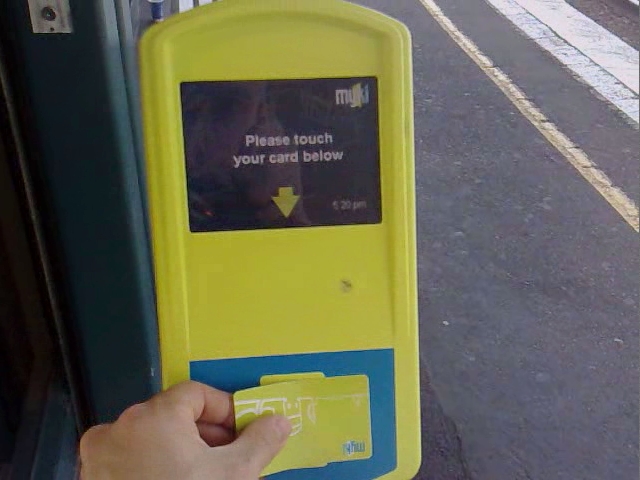
How do I touch on and touch off?
Touching on and touching off allows the system to know what to charge you, although touching off on trams is optional (see below).
Touch on your Myki ticket at a reader as you enter the station, or as you board the tram or bus. Touch off the ticket at a reader as you leave the station, or leave the tram (optional) or bus.
You must place the ticket flat on the reader. Don’t “swipe” it or move it around, because the reader will take longer to respond or not read the card at all.
The card must be within about half a centimetre of the reader, but preferably touching it. It will usually work from inside a wallet or bag, especially if the Myki ticket is in the closest pocket, but this isn’t guaranteed. It will often not work if you have other cards in your wallet which use similar technology (an RFID chip), because that confuses the reader.
Do I really need to touch on every time?
You need to touch on every time you enter a station, tram or bus to ensure your ticket is valid for travel, even if you have already touched on somewhere else for the particular journey you are undertaking.
In reality, you must touch on the first time you use a ticket for a particular journey, to set its expiry date and time. Not doing so is fare evasion.
There is an exception to that, however. You don’t have to touch on or off if you travel on a tram entirely within the “Free Tram Zone” which covers Melbourne’s CBD and Docklands. There is a map of the Free Tram Zone here .
But if your journey starts or finishes outside the boundaries of the Free Tram Zone, you must touch on your Myki in the normal way to make sure you have a valid ticket.
You must touch on when boarding a bus, even if your ticket is already valid for that journey, so that the bus driver knows you have a valid ticket. You must also touch on when boarding at railway stations if your destination is a gated station, otherwise the gates at your destination may not let you out, and you may have to queue for staff assistance.
You should also touch on and touch off if you are travelling on a Myki Pass outside the zone(s) you have paid for.
Do I really need to touch off every time?
Except on trams (see below), the official line is yes. If you don’t touch-off, you may get charged a default fare, which may be more than you’d otherwise pay.
The default fare is charged when the system doesn’t know where you got off the train/tram/bus, and it assumes you might have gone to the end of the line (on a tram/bus) or to the last stop of the longest line on the system (metropolitan trains).
In other words if you don’t touch-off on buses and trains the Myki system may assume you took a two-zone trip, and charge you for it. If this is the correct fare anyway (for instance you’ve travelled on a train from the CBD to a Zone 2 station) then you will not be charged anything extra if you do not touch-off, and so you can choose not to do so.
As noted above, you still need to touch on and off if you are travelling on a tram entirely within the Zone 1/2 overlap, if you want to ensure that you pay the cheaper Zone 2 fare.
The default fare does not apply to Myki Pass if you touched on (started your journey) in your nominated zone. In other words, if you have a weekly/monthly/yearly Pass on your Myki card, there is no need to touch off when travelling in the zone(s) covered by the Pass.
The government says it gets useful statistics about travel patterns if people touch on and touch off every time. However, they supposedly got useful statistics with the old Metcard system, as well as through manual surveys, but that hasn’t stopped services getting very crowded due to a lack of forward planning and investment over the past few years.
Why don’t I have to touch off on trams?
There was an obvious likelihood of congestion on trams resulting from the number of passengers trying to touch on and off at busy stops. Therefore, all tram routes were modified to be within Zone 1 (areas formerly in Zone 2 only are now all within the Zone 1/2 overlap), and so you do not have to touch off on a tram if you are only travelling within Zone 1, because the default fare on trams is a Zone 1 fare only.
However, if you travel on a tram entirely within the Zone 1/2 overlap, which only occurs right at the end of routes 75, 86 and 109, you do need to touch off before you alight to ensure that you are only charged the cheaper Zone 2 fare.
Do I get charged for another 2-hours if I touch off after the expiry time?
No. Your Myki ticket is valid as long as you touch on at a station, or board the tram or bus, before the expiry time.
I heard weekly/monthly/yearly Passes aren’t valid on weekends.
That is not true. They are valid on weekends, but only in the zones you’ve paid for.
A single-zone weekly/monthly/yearly Metcard used to be valid in both Melbourne zones on Saturdays and Sundays. That benefit has been withdrawn under Myki. The government argues that is necessary in order to be consistent with regional areas, and yet no regional area has the $6.30 weekend daily fare cap which is available in Melbourne.
The result is that Myki Pass users must pay extra if they travel into another zone. But their total fare will attract the $6.30 weekend/public holiday cap, and what has already been paid towards that is taken into account.
Why does the information displayed on the reader vanish too quickly for me to read it?
The information showing your card balance, and the amount deducted for your journey, will be displayed for as long as you hold your card to the reader, so hold it up for longer if you want to check that information. However, some of the new card readers on railway station barriers do not display any information about the status of the card.
You can also use a Myki Card Vending Machine or a Myki Check (blue-colured) machine to find out the balance on your card.
I’ve heard that a Myki card has an expiry date.
The validity of a Myki card expires four years after purchase, but the expiry date is not shown on the card itself. Note that the expiry date is set when the card is first loaded with credit, so if you buy a pre-loaded card that has been lying around for a while before you bought it, the expiry date may be less than four years away.
You can find out when your card expires by checking it on a Myki Card Vending Machine or blue Myki Check machine. These are situated at railway stations, some tram platform stops, and some major bus interchanges. You can also find out a card’s expiry date by ringing 1800 800 007 and quoting the card number.
If you have registered your Myki you can find out the expiry date by logging on to your account via the PTV website . People who have registered their Myki will be reminded of the imminent expiry by PTV before the expiry date.
Before your Myki expires you can go to any staffed railway station or PTV Hub to get a free replacement card. The remaining balance on your old card will be transferred to the new one. If your Myki has a negative balance, you will have to top-up to a positive balance as part of the replacement process.
If you can’t get to a location where you can replace an expiring Myki, there are two other ways doing so. Sixty days or less before the expiry date, you can either apply online or download an Application for Replacement Myki .
If your expired Myki is registered, the replacement card will also be automatically registered. However, if you have auto top up linked to your expired Myki, you will have arrange auto top up again for your new card.
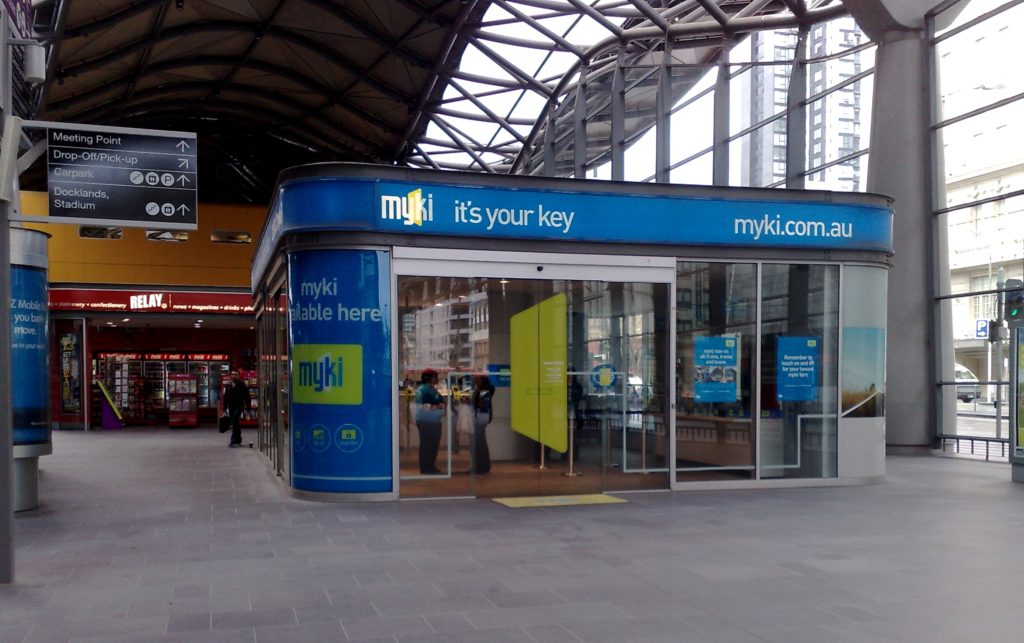
Does Myki Money always give me the best fare?
Provided everything works correctly, it does give you the best daily fare, by charging you the cheapest possible fare for each trip, and upgrading it automatically, for instance from a 2-hour Zone 1, to a Daily Zone 1+2 — whatever is cheapest for your day’s travel.
But if you use it every day, the system does not automatically upgrade you to a cheaper 7-day Pass or a 30-day Pass etc. Myki Pass must be pre-loaded to attract the cheaper periodical fare.
I heard you have to pay extra if the train is late.
No, not on trains, but you may be affected if you want to make use of the 2-hour fare and you catch trams and buses .
Under Myki, your ticket is valid as long as you start your trip (that is, touch on at the station, or as you board the tram or bus) before the 2-hour travel time expires.
This is only a problem when using trams and buses, because you only touch on as you board. When using trains you can enter the platform and touch on before the expiry time, no matter how late the train you are catching might be.
If you are going to travel for more than 2 hours it makes no difference to you, but if you are trying to make a couple of short trips using a bus or tram in a single 2-hour period, with no other travel that day, you will be charged the daily fare if the bus or tram arrives late, after your 2-hours has expired.
What’s the use of compensation being paid as Myki Money, when I have a Myki Pass?
Monetary compensation for poor service delivery can only be claimed if you have travelled for 10 or more days with a Myki Pass that is for 28 days or longer.
When Yarra Trams , Metro Trains or V/Line miss their monthly performance targets, you can claim compensation. Given the electronic nature of the Myki system, it is ridiculous that getting compensation is a manual process, involving filling in a form and posting it. It seems obvious that the system is designed to discourage passengers from getting the compensation they are owed.
Compensation is paid as the Myki Money equivalent of the zones covered by the Pass, rather than extending the duration of the Pass.
There are several ways to make use of the Myki Money compensation:
- Use it after your Pass expires. Note, however, that if you have another Pass loaded on your card, the Myki system will always use that first if it is valid for your trip.
- Use it for travel in other zones, including V/Line journeys.
- Request that the compensation amount is added to a different Myki card, such as a family member’s card, or a second card that you use. This option is on the form.
Is Myki switching us to distance-based fares?
No. The zone system is being retained.
Hong Kong, Singapore and a number of other cities use fares based on how many kilometres you travel. Myki fares continue to be based on zones (which now spread across a lot of Victoria) and duration (2-hour, daily, etc.) of travel.
The PTUA believes that distance-based charging has some disadvantages − it may lead to higher fares, and it is quite confusing, because you might not know how much you’ll be charged before you travel.
How do ticket inspectors and V/Line conductors check tickets?
There is little information printed on the Myki card itself, and no obvious way of telling whether you have validated correctly or not. Authorised Officers (ticket inspectors) and V/Line conductors use hand-held devices that can read the cards.
Has Myki slowed things down?
In some situations.
Station exits during the evening peak have become congested as train-loads of people queue to touch off. The new “Vix” readers which have been installed across the Myki system have eased that problem to some extent, particularly on buses, on which the older Myki readers were notorious for their slow and inconsistent response times.
The government’s decision not to include single-use tickets as an option might have speeded-up bus operations, but that is at the expense of occasional users who do not have a Myki, or passengers who have forgotten to have their Myki with them.
Touching off was made optional on trams, to avoid delays. Whether delays occur depends to a great extent on how quickly the readers respond, and how many there are. It is worth noting that London’s buses and trams were both switched to a flat fare system, requiring no touch-off, because delays during disembarking were causing problems.
Does Myki work properly?
Virtually every aspect of Myki’s introduction was poorly handled. The PTUA flagged a number of design and implementation problems with Myki that needed fixing , and we are continuing to give feedback to Public Transport Victoria.
The biggest drawback with the Myki system is the state government’s unexplained decision not to make single-use tickets available, meaning that every public transport user must have a Myki card, loaded with sufficient credit, to be able to travel. This makes things extremely difficult for tourists, for new and occasional public transport users, or for passengers who have problems with their Myki, and it will be a further source of fare evasion.
As soon as Myki began operating, the PTUA asked that different sounds be introduced for a touch on and a touch off. Instead of that, we got the totally unnecessary introduction of a double beep for concession passengers.
Opportunities for buying and topping up cards are still too limited, especially for tram and bus users.
There have been a number of instances of people mistakenly “touching on” at the blue Myki Check machines, rather than the actual Myki card readers, and then being fined for not having touched on. We asked PTV to make changes to the relevant hardware and software which will make this less likely to occur.
Watch the system very carefully to ensure you’re being charged correctly. Keep a close eye on the Myki readers as you use them, check your transactions on the Myki Check machines (the blue machines in stations and some trams stops) at vending machines and/or via the PTV web site, and ring 1800 800 007 or contact PTV online if you suspect you have been overcharged.
Was Myki worth the money?
Probably not. Although the Myki system brings some benefits , including better access to cheap fares, these are eclipsed by the enormous cost of the system.
Few passengers wanted a new ticket system, and the PTUA argued that, for a fraction of the cost, either the previous Metcard system could have been updated, or a cheaper Smartcard system bought from elsewhere. The money saved could have been spent on more staff, trains, trams and buses. But the change has happened, so we’re providing feedback to Public Transport Victoria to try and improve the outcome for passengers.
Further questions?
Email office at ptua.org.au with your questions. We’ll endeavour to find out the answers and post them back here.
If you want to read all the fine print yourself, it’s contained in the Victorian Fares and Ticketing Manual . Be warned, the Manual is over 100 pages long.
Public Transport Victoria has posted some useful information on its web site, which you can read here .
You can ring PTV for information, on 1800 800 007 (6 a.m. – midnight daily).
You can also go to a PTV Hub to get assistance. There is one near the Collins Street entrance of Southern Cross Station (pictured). There is another Hub on the ground floor of the PTV headquarters building at 750 Collins Street, Docklands, about 500 metres from Southern Cross station. That Hub can perform more operations than the one at Southern Cross. For example the Collins Street Hub includes the Pass Office, which issues the various forms of free travel passes which are available on the public transport network.
There are also PTV Hubs in Geelong and Bendigo.
What is the PTUA anyway?
Founded in 1976, the Public Transport Users Association is the recognised consumer organisation representing passengers of all forms of public transport.
We are a non-profit, voluntary organisation, with no political affiliations. If you want to help support our work, please join us . You get five newsletters per year, as well as access to cheap Yearly tickets , and you’ll be helping the campaign for better public transport in Melbourne and around Victoria.
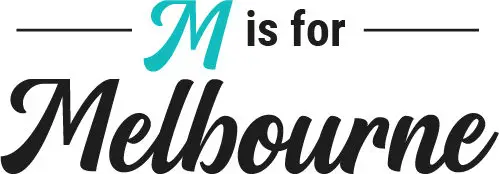
Melbourne Transport Guide: How to Get Around on Public Transport, Bike, Uber and More
Want to know how to get around Melbourne when you visit? In this Melbourne transport guide, I’ll share everything you need to know!
While Melbourne is a fairly big city, spread out over almost 10,000 square kilometres and with just over 5 million people, it’s actually an easy city to get around. Tourists especially will find that there are several Melbourne transport options that will get them to most of the places they need to go quite easily.
While we Melburnians like to complain about trains being late and trams blocking the roads, we really do have a decent public transport system. This is especially so if you’re sticking to the inner city and major tourist areas. We also have plenty of other methods of getting around, so you’ll rarely be stuck anywhere.
In this Melbourne transport guide, I’m sharing all the ways to get around this wonderful city of ours. From trains to trams, Uber to bikes, here’s what you need to know!
This blog post may contain affiliate links, meaning if you book or buy something through one of these links, I may earn a small commission (at no extra cost to you).
What's in this article (Click to view)
How to get from the airport to Melbourne city
Let’s start off with how you get to the city from the airport.
Melbourne has actually two airports: Melbourne Airport and Avalon .
Melbourne Airport (code: MEL, often referred to as Tullamarine) is the largest airport in Melbourne (and second-busiest overall in Australia) and it’s where international flights arrive. This is the closest airport to the city, a 30-minute drive into the central business district (CBD).
The second airport is Avalon (code: AVV), which is further from the city, near Geelong. Right now, only domestic flights are operating here.
How to get to the city from Tullamarine Airport
Melbourne is still without a train to and from the airport, so to get from Melbourne airport to the city, your options are Uber/rideshare or taxi, renting your own car, or taking the SkyBus .
An Uber or taxi will cost you around $45-$75 (up to $100 sometimes during peak periods). There are two taxi ranks, one outside of Terminal 1 and the other at the end of Terminal 4 in the car park. You can estimate your fare with this handy online calculator .
There’s a dedicated Uber pick up area outside of Terminal 2, and Uber and other rideshare vehicles can also collect passengers from outside Terminal 2 (in lane 3) and in the Terminal 4 car park. All these areas are signed.
The SkyBus is a bus transfer that operates 7 days a week. It goes from Melbourne Airport to Southern Cross Station. One-way fares cost from $22. You can buy tickets online here .
There’s also a SkyBus service from Melbourne Airport to St Kilda and Frankston.

For a private transfer that you organise in advance, book online here .
Ask your hotel if they offer an airport shuttle. Some hotels do, but they’re rarely complimentary.
Rental cars are easily accessible from the airport. All the rental companies are located outside Terminal 2. During peak periods, it can be really slow to pick up a car. I like to book hire cars through DiscoverCars as I find they usually have the best range and prices.
You should definitely book a car in advance rather than turning up and hoping there’ll be one available. Although, as I’ll share later, a car really isn’t necessary, unless you’re taking day trips from Melbourne or plan to spend more time in the outer suburbs.
How to get to the city from Avalon Airport
If you decide to book a flight into Avalon because it’s super cheap, remember that you need to also factor in the cost of then getting from the airport to Melbourne.
As the airport is around 50 kilometres from Melbourne, an Uber or taxi will set you back $100-$135.
A far more affordable option is the SkyBus , which costs $25 one way and takes around an hour to get to Southern Cross Station in the CBD.
Melbourne public transport
Melbourne’s public transport system includes trains, trams and buses, and I’ll explain each of these.
Download the Public Transport Victoria app to figure out how to get from A to B on the Melbourne public transport network.
Melbourne myki card
To use public transport in Melbourne, you’ll need a myki card. This is a hard plastic card that you “tap on and tap off”.
Buy a myki card at one of the major train stations or most 7-Eleven stores for $6.
There are two ways of loading money on your card: myki Money and myki Pass. myki Money is best if you’re only in town for a few days, but a seven-day myki Pass will be more cost effective if you’re visiting for a week or longer.
You can check fares using the myki fare calculator .
Recharge your myki at 7-Eleven stores, ticket offices at train stations or the myki machines that are at some tram stops.
When travelling on public transport, you simply tap your myki on the green readers when you get on the tram, or tap it to enter the train station. It’ll then deduct the fare for your trip. You can check your myki card balance at the top-up machines.
When you leave Melbourne, gift your myki card to someone else or leave it at your hotel, as it’s reusable. You can even donate it to charity – there are donation bins at Station Pier and Southern Cross Station. Or just hold on to it if you’re planning to return to Melbourne in the near future (come back, there are so many things to do in Melbourne that there’s no way you did everything in just one trip!).
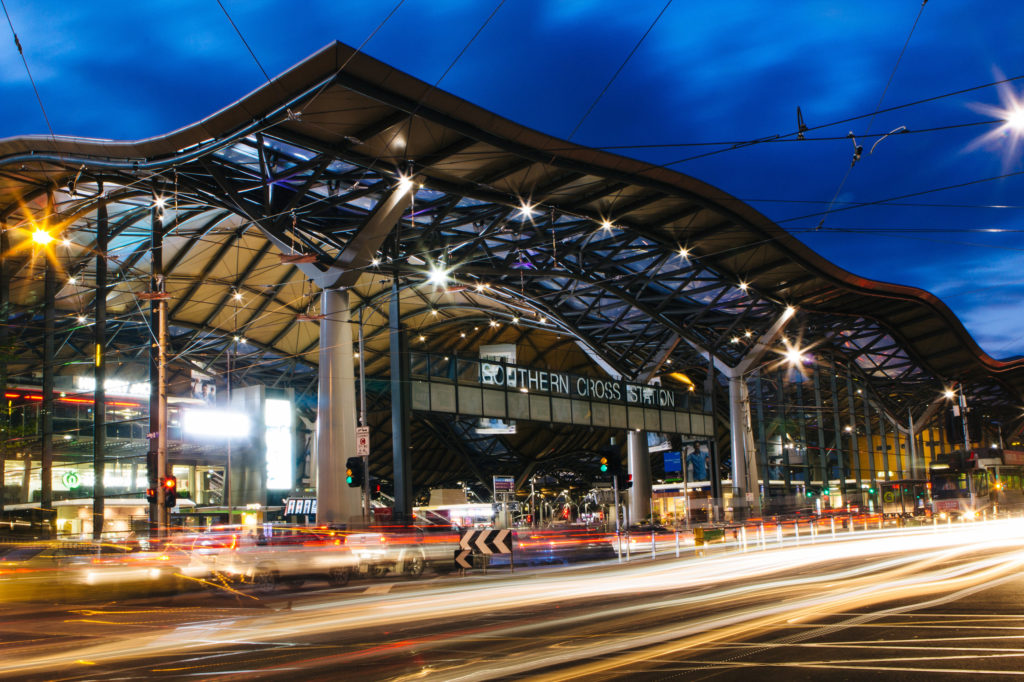
Trams in Melbourne
Trams are great – and can be fun for first-time visitors! Melbourne has the largest tram network in the world.
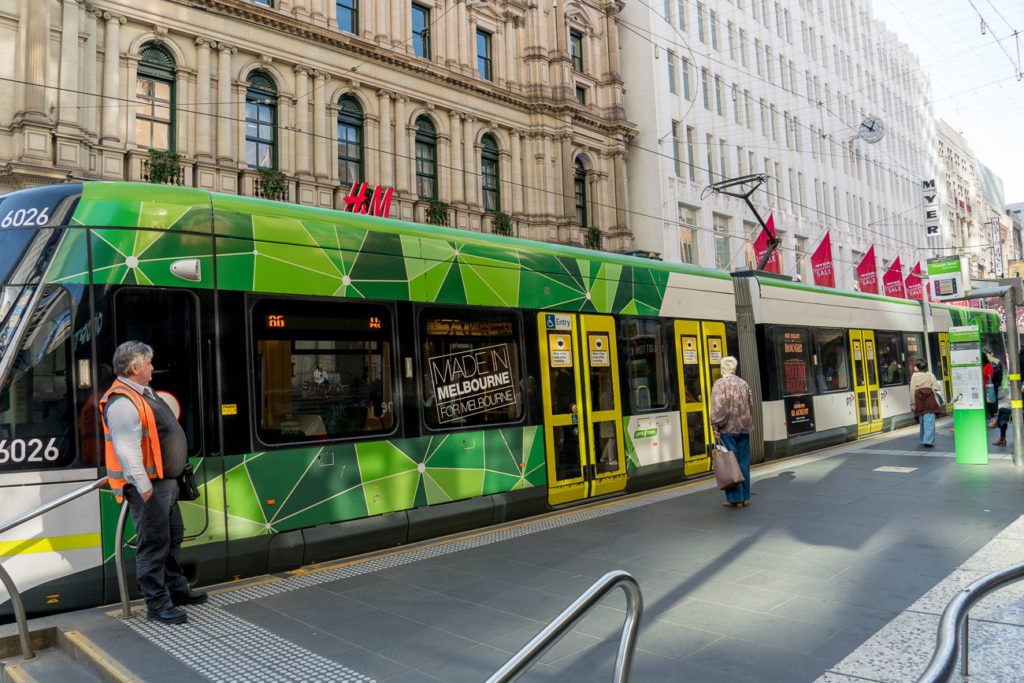
There’s a Free Tram Zone within the Melbourne CBD; the Free Tram Zone map online shows you where you can get around for free. If you’re sticking to the CBD on your visit to Melbourne, you can effectively travel for free if you use trams and your feet.
As soon as you head outside this free zone on the trams you’ll need to get a myki travel card. There are many tram routes in Melbourne, and you can check out the Melbourne tram map here .
You need to tap your myki card against the green card reader inside the tram doors (you’ll hear a beep), but you don’t need to tap when you get off the tram. If you’re in the Free Tram Zone, you don’t need to tap at all.
Warning: trams can stop suddenly, so hold on!
There’s also a Melbourne City Circle Tram that handily passes by some of the major Melbourne tourist attractions (check out the top 25 things to do in Melbourne ). These trams are historic, and come with commentary, and they’re also free. They travel clockwise around the city every 12 minutes or so.
PS. Looking to save money? Check out my guides to free things to do in Melbourne and cheap things to do in Melbourne .
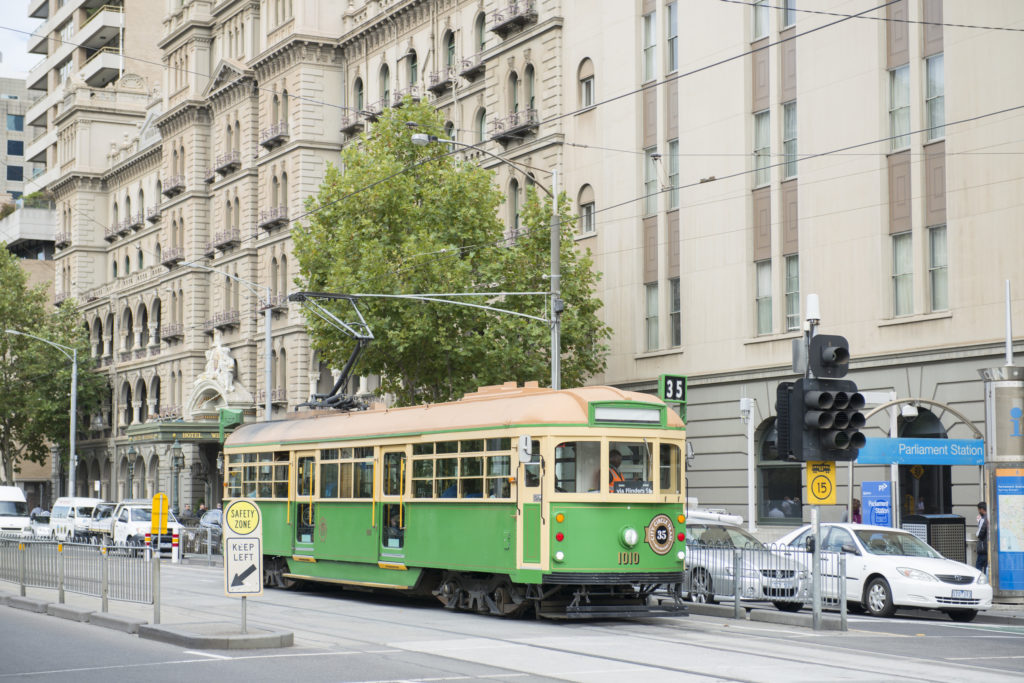
Trains in Melbourne
Melbourne has an extensive train network with links from the city to the outer suburbs. There are 16 train lines on Melbourne’s grid and services are seven days a week. See a map here .
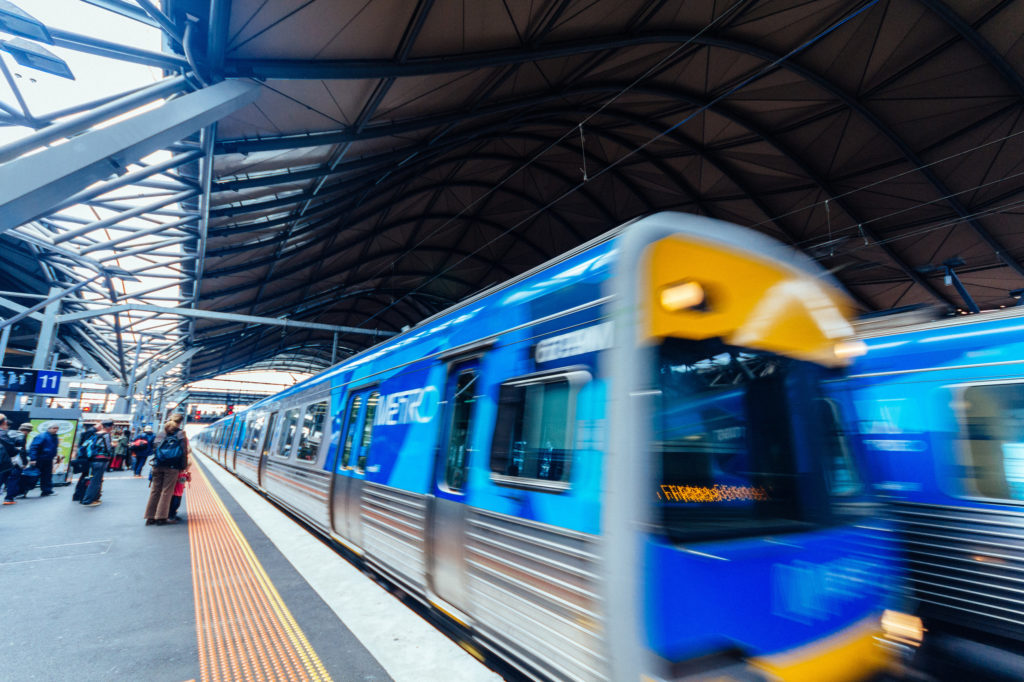
The major train stations within the city are Flinders Street Station, Parliament, Melbourne Central and Southern Cross Station, along with Richmond.
To enter the platforms, you’ll need to tap your myki card to go through the gates, and then tap to exit.
One downside of our train network, though, is if you’re in the outer suburbs and trying to travel to another outer suburb, there’ll rarely be a direct train connection. You’ll need to go into the city and then back out, which is a pain, or find a suitable bus route.
Trains can also be packed like sardines during the morning and evening rush hour, so avoid these times.
And don’t be surprised if there’s a service delay. There are a lot of upgrades going on at the moment, so trains can be delayed frequently, and sometimes trains are replaced with buses on sectors.
There’s also a train network that connects Melbourne to various regional cities and towns in Victoria. These V/Line trains depart from Southern Cross Station and can be a convenient way to explore Victoria. (Check out these day trips from Melbourne for inspiration!)
Your myki card won’t work on V/Line services, so you’ll have to buy a separate ticket.
Buses in Melbourne
Melbourne’s bus network crisscrosses the city. Buses will get you further than a tram will. Check out the network map and bus routes here .
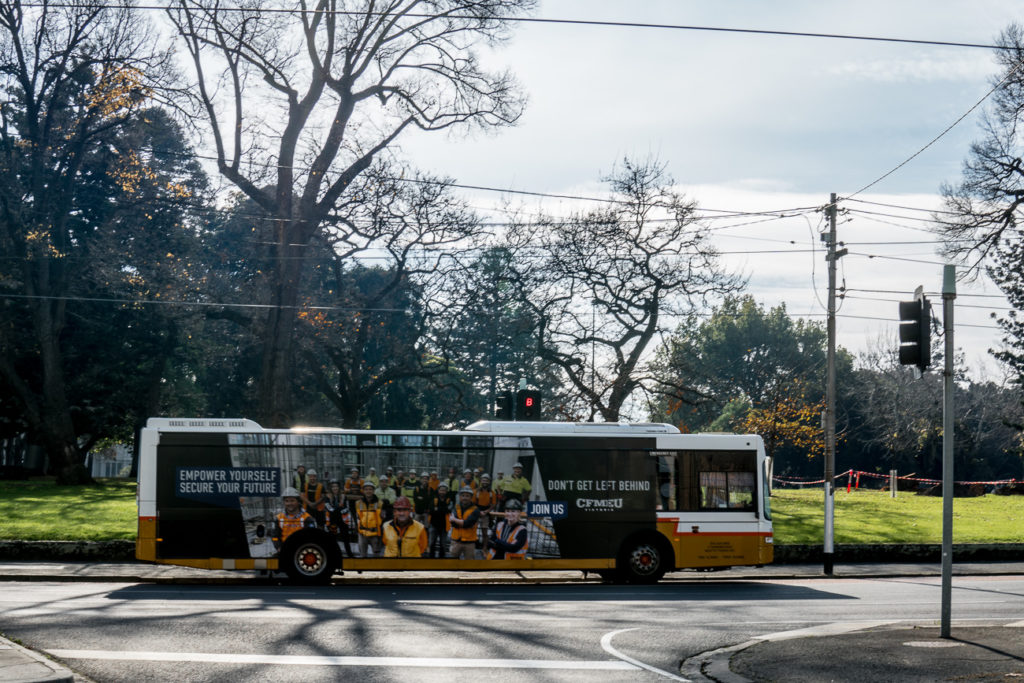
Use your myki card to pay for bus services – tap both on and off.
If you’re checking out Melbourne nightlife , there are also great night services on the weekend.
Keep in mind that buses share the roads with cars, so travelling around Melbourne by bus will be longer than driving – especially during peak hour traffic.
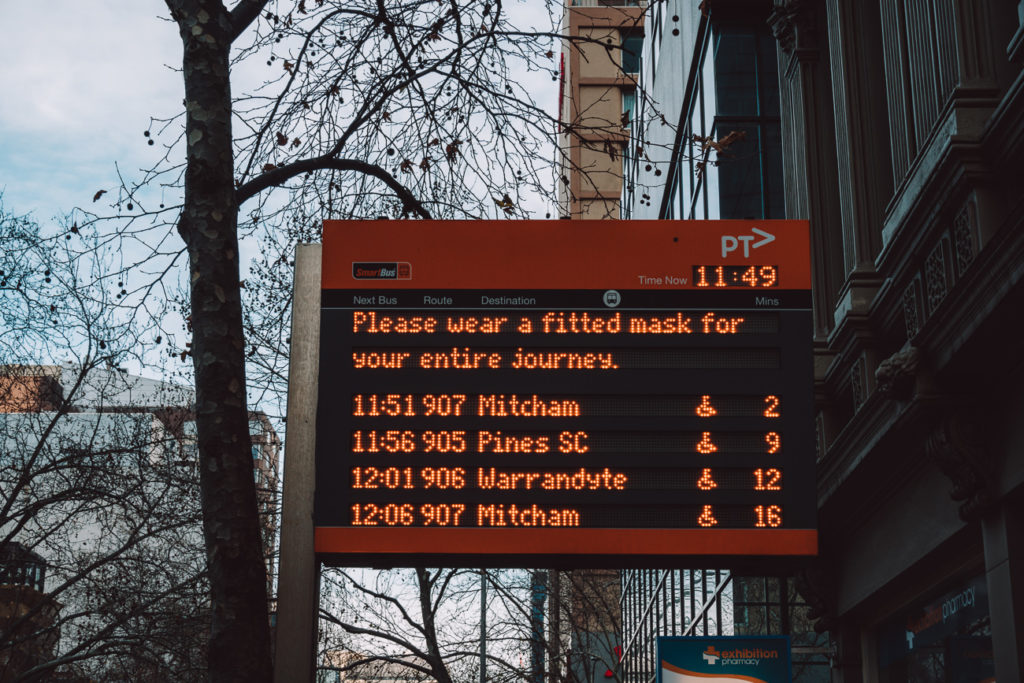
Ride share in Melbourne
In Melbourne, the major ride sharing companies/apps are Uber, DiDi and Ola, as well as Shebah (an all-women service).
They work exactly the same way as in other cities. Simply download the app of the ride share company you prefer and off you go.
The same safety precautions also apply. Always check the registration of the vehicle and confirm the driver’s name before you get in. I always like to share my trip with my husband if I’m travelling alone.
Taxis in Melbourne
You can easily hail a taxi, find one at a designated taxi rank, call directly or book a trip using an app. Taxi ranks can usually be found in front of hotels, out the front of major train stations and other busy areas.
The two taxi services in Melbourne I prefer are 13Cabs and Silver Top . Both have apps so you can pre-book a ride or plan a trip on the fly.
If you’re in a taxi between 10pm and 5am you’ll need to pay an upfront estimated fare. That’s thanks to all the drunken passengers skipping out on paying!
Estimate your fare using an online calculator . Tolls are added to fares.
Car rentals in Melbourne
If you’re just sticking to the inner city when you visit Melbourne, a car won’t really be necessary. You can rely on public transport to get around.
But if you want to do some day trips from Melbourne or get to the outer suburbs, then renting a car can be an affordable way to do it. Check out DiscoverCars for rental options that you can pick up from the airport or at other locations in the CBD.
Parking in the city can be expensive. In inner city areas, many streets have permit-only parking for residents, so pay attention to signage when you park.
We have these weird things called hook turns in the CBD that will confuse the hell out of you! I don’t think they’re anywhere else in the world? But they’re there to avoid disrupting trams.
You will also need to remember to stop for trams.
Only need some wheels for a few hours? Try car sharing through companies like Popcar or GoGet . They have designated parking spots around the city.
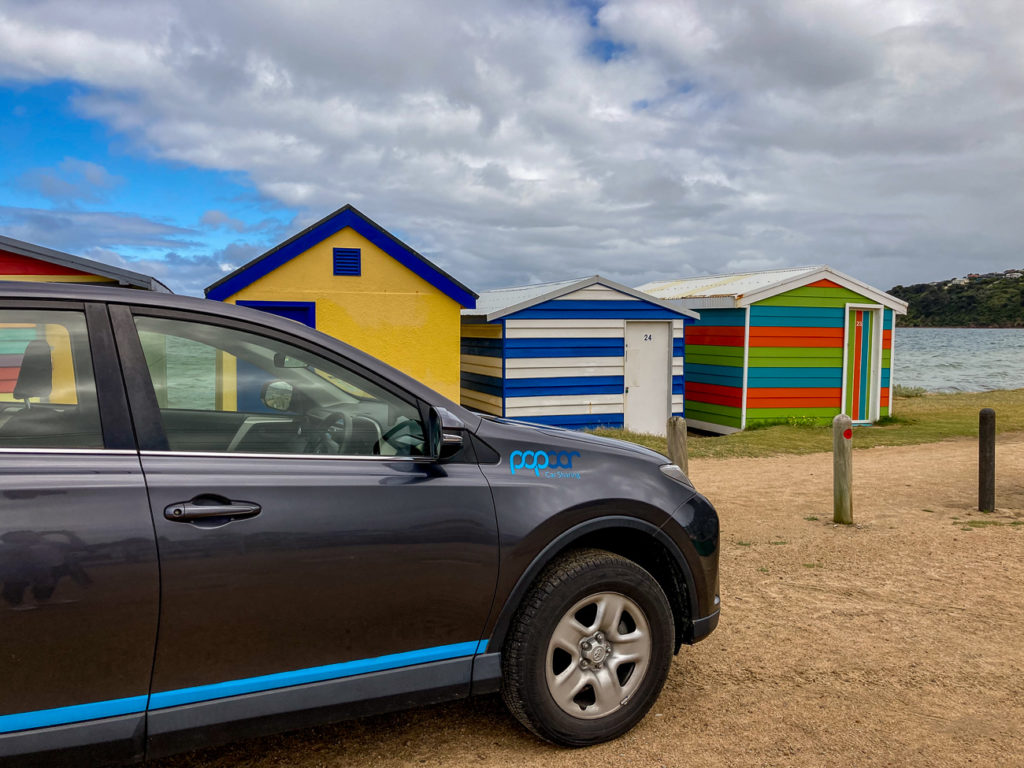
Getting around Melbourne by bike
If you want to burn some energy, it’s easy to get around Melbourne by bike. There are several marked bike lanes around the CBD and inner city.
But do keep an eye out, because some Melbourne drivers are aggressive when it comes to cyclists. By law, helmets must be worn.
Melbourne’s bike-sharing system was unfortunately scrapped some time ago, but you can rent a bike from a private company like Blue Tongue Bikes .
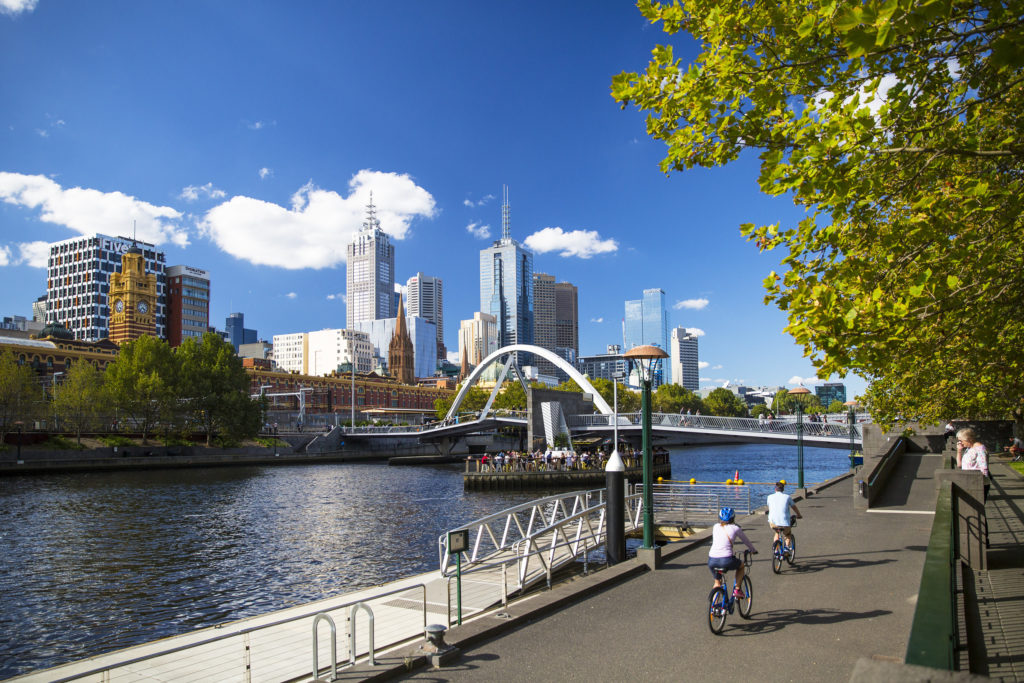
e-scooters in Melbourne
The City of Melbourne has been trialling the use of e-scooters in the inner city. Download the Lime or Nueron apps to unlock an e-scooter like you would anywhere else.
The e-scooter zone covers the CBD and extends to Fitzroy in the north, Burnley in the east, Elwood in the southeast and Flemington in the west. Here’s a map .
Walking around Melbourne
One of the best ways to get around Melbourne is on foot! The CBD and inner-city areas are fairly flat, with wide footpaths and plenty of pedestrian crossings and traffic lights to keep you safe.
The CBD is laid out in a grid, so once you’ve taken a look at a map and seen the layout of the major streets, it’s hard to get lost.
I always think that you see so much more of a city on foot. You can duck into our famous laneways and arcades and explore shops at your leisure. There are also some great walking tours in Melbourne to get local insight into history and culture.
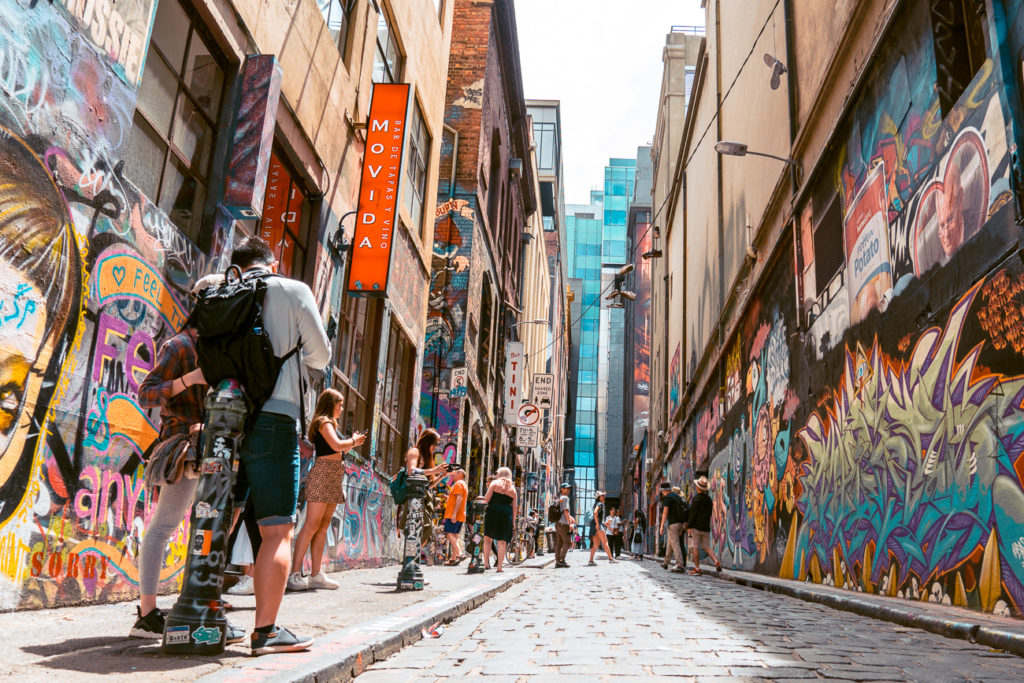
Final thoughts on getting around on Melbourne transport
Despite being a large city, Melbourne is easy to get around. With multiple modes of transport available, including an extensive public transport system, with a bit of planning you can get from A to B easily.
Found this article useful? Consider buying me a coffee as a way to say thanks!
Got any more questions about how to get around Melbourne? Drop them in the comments section below.
Related posts
Before you go… you might like these handy Melbourne travel planning blogs:
- 15 Melbourne Travel Tips Every Visitor Should Know
- The Best Time to Visit Melbourne + What To Do by Month
- The Ultimate Melbourne Bucket List: 101 Best Things to Do, See and Eat
- 30 Awesome Things To Do in Melbourne
Best Melbourne resources
- Check out my Melbourne travel guide for everything you need to know about planning a trip to Melbourne
- Look for flights to Melbourne on Skyscanner .
- Book accommodation on Booking.com or Expedia for your Melbourne trip. The Ovolo Laneways Hotel is a good choice in the CBD.
- You won’t really need a car in Melbourne, but if you do want to get out of the city, then rent a car through DiscoverCars .
- Pick up a copy of the Lonely Planet Pocket Melbourne to help plan your trip.
PIN IT FOR LATER
Visiting Melbourne? Save this guide to Melbourne transport options to Pinterest so you can get around the city on your trip.
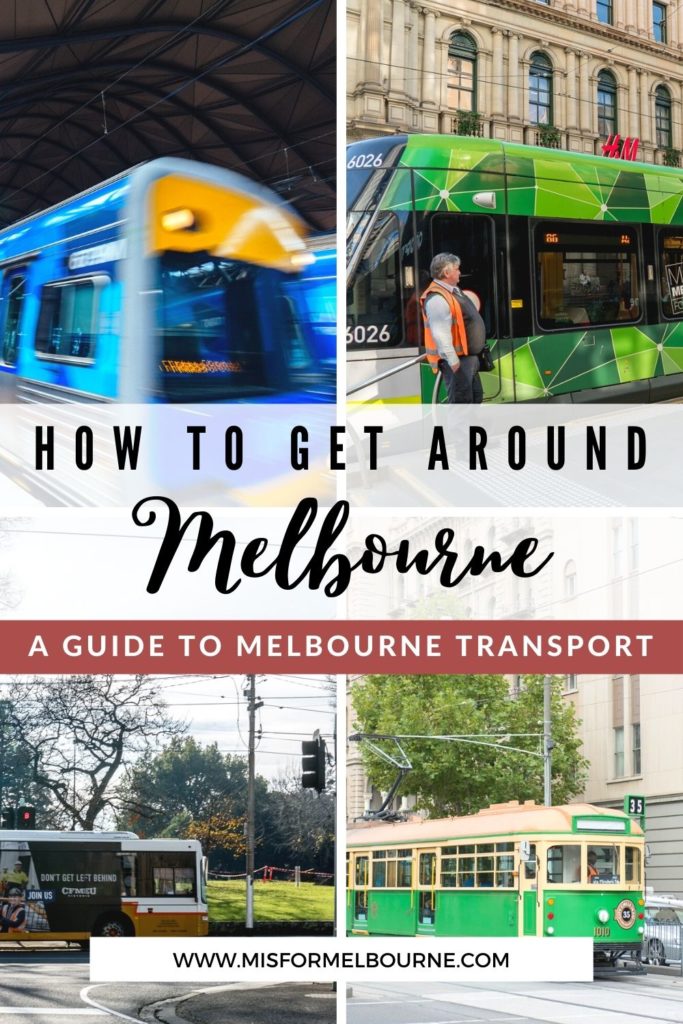
About THE AUTHOR
I’m Rebecca, a Melbourne local excited to show you the best of Melbourne. I've visited more than 40 countries and have a Master of International Sustainable Tourism Management. After living abroad for 8 years, I’m back home in Melbourne, rediscovering this city that I love and have missed. My aim is to help you find the best things to do in Melbourne.
Leave a Comment Cancel reply

- Privacy Overview
- Strictly Necessary Cookies
This website uses cookies so that we can provide you with the best user experience possible. Cookie information is stored in your browser and performs functions such as recognising you when you return to our website and helping our team to understand which sections of the website you find most interesting and useful.
Strictly Necessary Cookie should be enabled at all times so that we can save your preferences for cookie settings.
If you disable this cookie, we will not be able to save your preferences. This means that every time you visit this website you will need to enable or disable cookies again.
Commuters to use credit cards to pay for fares on public transport as myki contract replaced
Commuters will be able to pay for Victorian bus, tram and train fares with a debit or credit card as part of a new contract for the state's public transport ticketing system.
Key points:
- Capacity to use credit and debit cards as well as smartphones will be rolled out across the state over two years from 2024
- Conduent Business Services already runs the public transport ticketing system in a number of major international cities
- The 15-year contract is worth $1.7 billion
The US-based Conduent Business Services has been awarded a $1.7 billion, 15-year contract to take over the service at the end of 2023.
It takes over from NTT Data which has run the myki system since 2007.
Trials will begin in 2024 which will see debit and credit cards progressively added to public transport services, including V/Line regional services.
That process is expected to take two years.
Public Transport Minister Ben Carroll said the new ticketing system would be simpler and more convenient for commuters.
"You'll actually be able to use your credit card when you get to the gate, or your credit card to touch on and touch off," Mr Carroll said.
"For the past 16 years, we have had a card-based ticketing system under myki. We will now reach the 21st century with account-based ticketing."
The new system will continue to be known as myki and physical cards will still be able to be used for the next two years as the changes are introduced.
"Myki does have a strong brand awareness but it will be a completely different company running the system," Mr Carroll said.
Fares will also be able to be paid for on smartphones and watches and will be compatible with both Android and Apple mobile phones.
The current myki app was introduced in 2019 and only works on Android phones.
Victoria to no longer be 'the test bed'
Myki has long faced criticism from public transport users who have complained about the lack of options for travelling if a commuter left their card at home , lack of ease to top up balances, and the expiration of cards.
Mr Carroll said he was confident there would not be the same discontent with the new system.
He said the major difference between services is that it is not a world-first.
"Indeed, we are taking a system that has been tested in Paris, in Dubai, in Montreal, in New Jersey and bringing that system here to Melbourne so we're not the first responder for this new system, we aren't the test bed."
Shadow Minister for Public Transport Richard Riordan questioned why it would take two years to trial what he described as an "off-the-shelf" system that was already in use in major global cities.
"It must clearly come from a very high shelf because they're going to need a long ladder and a lot of time to get to it and bring it down to Victorians," Mr Riordan said.
He also questioned whether the digital smart phone and smart watch rollout would be reliable in regional areas which can have patchy signals.
The Public Transport Users Association's Daniel Bowen called for the system to be rolled out across the state, including in remote areas, to ensure a "seamless experience no matter where you travel".
He said he also hoped to see the implementation of automatic fare capping.
"You should just be able to travel and the system should be able to say, 'yep, you've reached the weekly fare, we're not going to charge you anymore,'" he said.
"Sydney's got it so you'd hope they'd deliver on that [in Melbourne]."
New South Wales rail commuters have been able to use debit and credit cards since 2018 with the system expanded to buses the following year.
Tap and pay is available on Adelaide's trams and O-Bahn bus system and it will be available on all buses by mid-2023, while Queenslanders can use them on the Gold Coast tram network and some train networks around Brisbane.
- X (formerly Twitter)
- Public Transport
- State and Territory Government

IMAGES
VIDEO
COMMENTS
You'll need either a myki or paper ticket to travel on public transport in Melbourne and regional Victoria.. You need a myki if you're travelling on: Melbourne's trains, trams and buses; V/Line trains between metropolitan Melbourne and Eaglehawk/Epsom, Seymour, Traralgon, Waurn Ponds and Wendouree
Buy a myki and top up at a huge range of shops (including 7-Eleven stores), myki machines and station ticket offices. As a guide, $11 will get you around Melbourne for a day, with a little change. For more on fares, visit Fares. Mobile myki. Mobile myki is a digital myki on your Android phone on the Google Wallet TM app. Find out more at Mobile ...
2,927 posts. 207 reviews. 59 helpful votes. 3. Re: Taking Train at Melbourne without Myki card. 5 years ago. The max daily fare is $8.80, and the myki card itself is $6. When you buy one, load it with $36 (or $35.20 if you want to be precise) and you'll be ok. A weekly pass is $44, it breaks even at 5 days of travel and saves you for 6 or 7 days.
Buy a Myki card, add at least $5 credit, then catch a 901 bus from the transport interchange next to Terminal 4. Alight at Broadmeadows train station, where you can use the Myki to catch a train to the CBD - all for a $5 fare. 6. Drink the local coffee.
You can manage up to 10 mykis through one account. You can register online, via the PTV app or call 1800 800 007 and registration is instant. You'll need your 15-digit myki number to register. With a registered myki you can check your myki balance, top up, buy a myki, get notified when your myki is due to expire and more.
This is a good deal if you're exploring Melbourne for 7 days. Note that these are consecutive days. Passengers 5-18 years old can avail of the 50% concession discount. The card price becomes only A$3, weekday fare A$2.20 for 2 hours, daily rate A$4.40, weekend daily cap A$3.2, and 7-day pass cost A$22.
Be sure to tap your Myki both on and off when using buses, and take your backpack off before boarding. 4. V/Line trains and coaches. Photograph: Creative Commons. Best for: Those day tripping from ...
myki is the reusable travel card for trains, trams, and buses around Melbourne and parts of regional Victoria. Some regional towns in Victoria offer paper tickets and paid in cash. ... Melbourne's Free Tram Zone can be used without a myki. It runs through the city centre, with major stops like Queen Victoria Market, Docklands, Spring Street ...
You can either pay as you go from your credit balance or purchase a seven-day unlimited travel Myki Pass ($50). Note that there are large fines for traveling without having touched on a valid Myki card, and ticket inspectors are unforgiving and sometimes undercover. For timetables, maps and a journey planner, visit Public Transport Victoria (PTV).
myki cards. myki is Melbourne's ticket to travel on the city's trains, trams and buses. It's a plastic smartcard with stored value that can be topped up. Purchase your myki online at myki.com.au, premium train stations, retail outlets displaying the myki sign (including 7-Elevens), or by calling 1800 800 007 (free from a landline) in Australia.
A Free Tram Zone operates in Melbourne city centre. If your travel is within this zone you don't need to tap on or off with your myki card. The free hop-on, hop-off City Circle Tram (number 35) is a great introduction to Melbourne, with city loop services running every 15 minutes.
PTUA members who are regular public transport users can buy discounted Yearly tickets, at about 9% off the retail price, and that includes a free Myki card. You can see full details of the offer here. Commuter Club is also available via some employers. Note that Commuter Club is only a Melbourne metropolitan program.
207 reviews. 59 helpful votes. 3. Re: Taking Train at Melbourne without Myki card. 5 years ago. Save. The max daily fare is $8.80, and the myki card itself is $6. When you buy one, load it with $36 (or $35.20 if you want to be precise) and you'll be ok. A weekly pass is $44, it breaks even at 5 days of travel and saves you for 6 or 7 days.
Here are some travel hacks for you to explore Melbourne, Australia on a budget: Table of Contents Collapse. 1 Transportation. 1.1 Must-Have: myki. 1.2 Myki Explorer pack. 1.3 By bus. 1.4 By tram. 1.5 By metro train. 1.6 By shared transfer.
Melbourne is still without a train to and from the airport, so to get from Melbourne airport to the city, your options are Uber/rideshare or taxi, renting your own car, or taking the SkyBus. An Uber or taxi will cost you around $45-$75 (up to $100 sometimes during peak periods). There are two taxi ranks, one outside of Terminal 1 and the other ...
myki is Melbourne's ticket to travel on the city's trains, trams and buses. It's a plastic smartcard with stored value which can be topped up and re-used again. Purchase your myki online at the PTV website , premium train stations, retail outlets displaying the myki sign (including 7-Elevens), or by calling 1800 800 007 (free from a land line ...
How to travel with myki - touching on and off on trains, trams and buses. Also see V/Line myki rules and change of mind information. ... If you use myki Money and don't touch off, you'll be charged a default 2 hour fare for metropolitan Melbourne. Trams. If you're travelling in Zone 1+2, remember to touch on. You don't need to touch off.
The US-based Conduent Business Services has been awarded a $1.7 billion, 15-year contract to take over the service at the end of 2023. It takes over from NTT Data which has run the myki system ...
If you do Myki money, you don't have to use it in a certain time, it just gets used up gradually as you travel - if you put $20 on, and use $4.60, the rest just stays there until you use the card again. But if you buy a weekly Myki pass, the first time you use your card after that 'starts the clock' and your pass will expire in a week whether ...
Planning a Melbourne travel itinerary: Things to know before you visit Transport passes. You'll need a Myki card to use the trams and Metro trains. It can be purchased from a number of locations, perhaps the easiest being convenience stores such as 7-Eleven. It costs AUD 15.00, where it's AUD 6.00 for the card and AUD 9.00 of preloaded credit.
You can manage up to 10 mykis through one account. You can register online, via the PTV app or call 1800 800 007 and registration is instant. You'll need your 15-digit myki number to register. With a registered myki you can check your myki balance, top up, buy a myki, get notified when your myki is due to expire and more.
Hi, I phoned up your department 2-weeks ago I want to apply for access travel pass (photo-identity) for back of Myki tap on travel card via Melbourne. And, yes I do have a (mental-health condition). Dr, medical statement to verify my identity. Kind, regards shermyra nahveta c.ya!.🇦🇺
For more information see Group Travel Authority. myki Pass. If you travel most days, you can save money with myki Pass. To access the full benefits of your myki Pass, choose Zones 1-15 and how many days you need. You can buy a myki Pass for 7 days or anywhere between 28 and 365 days. For more information, see myki Pass. Weekend fares